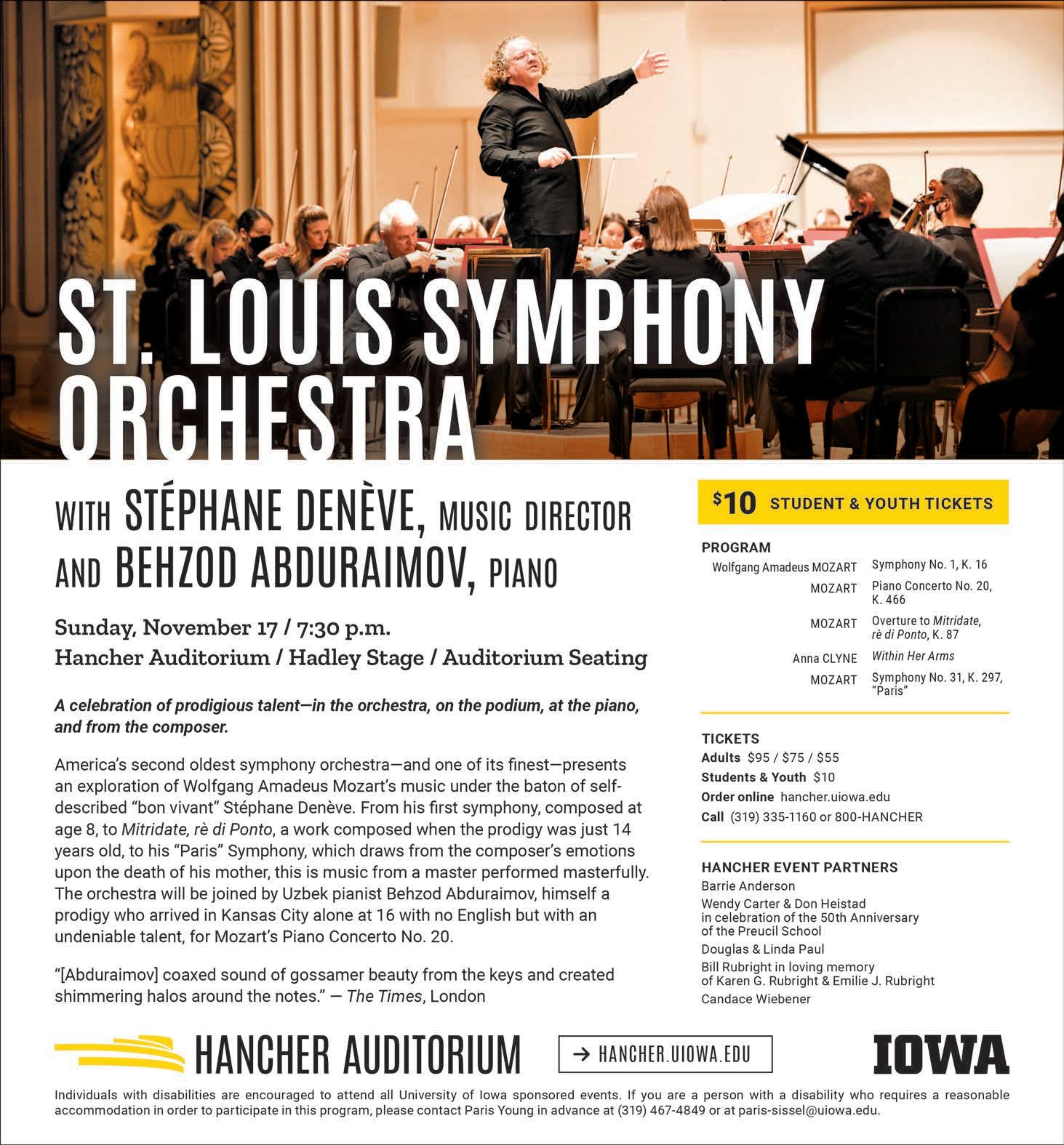ONE NATION DIVIDED


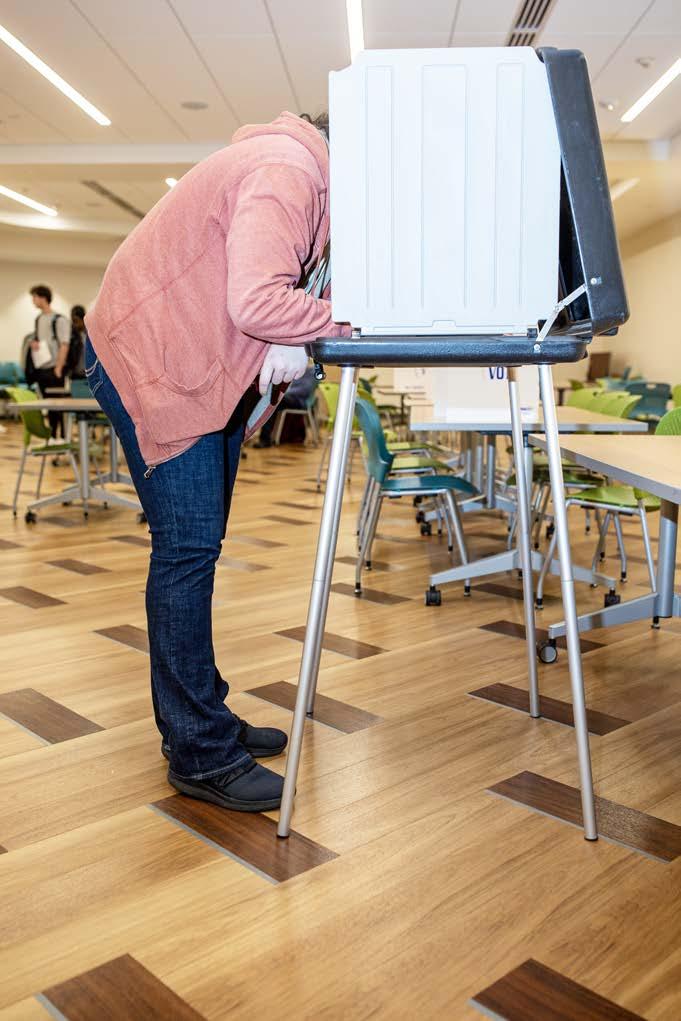
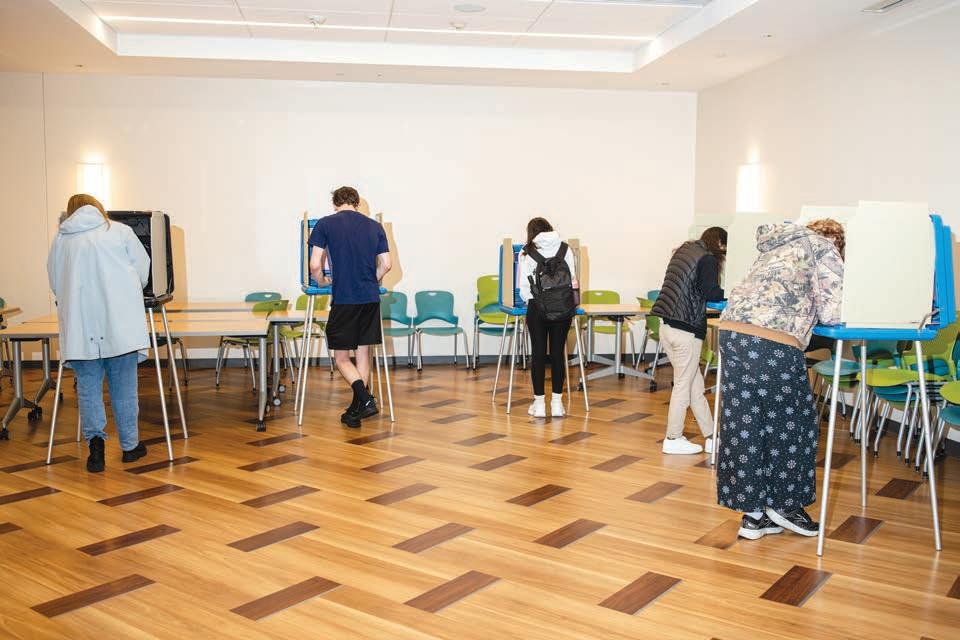
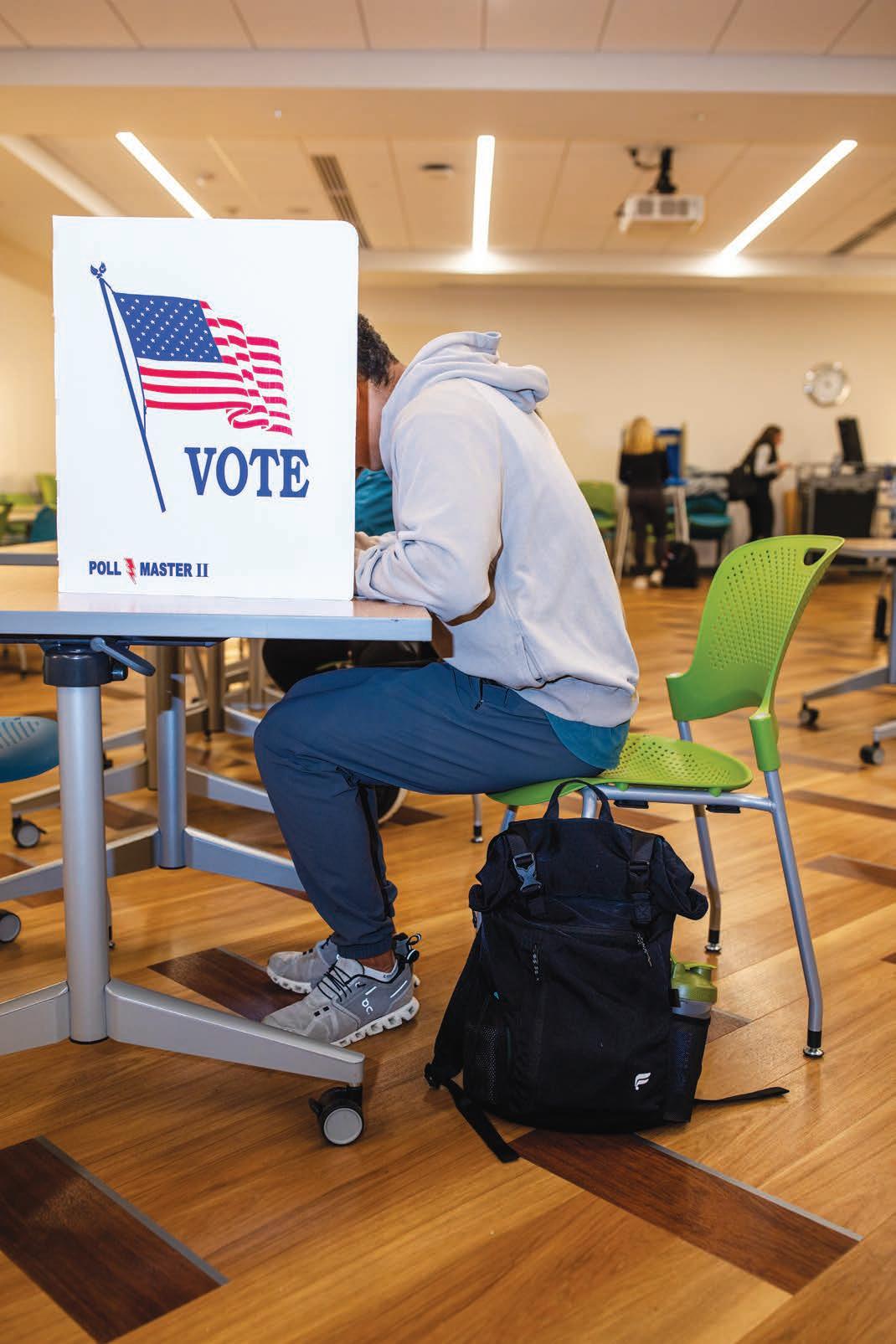
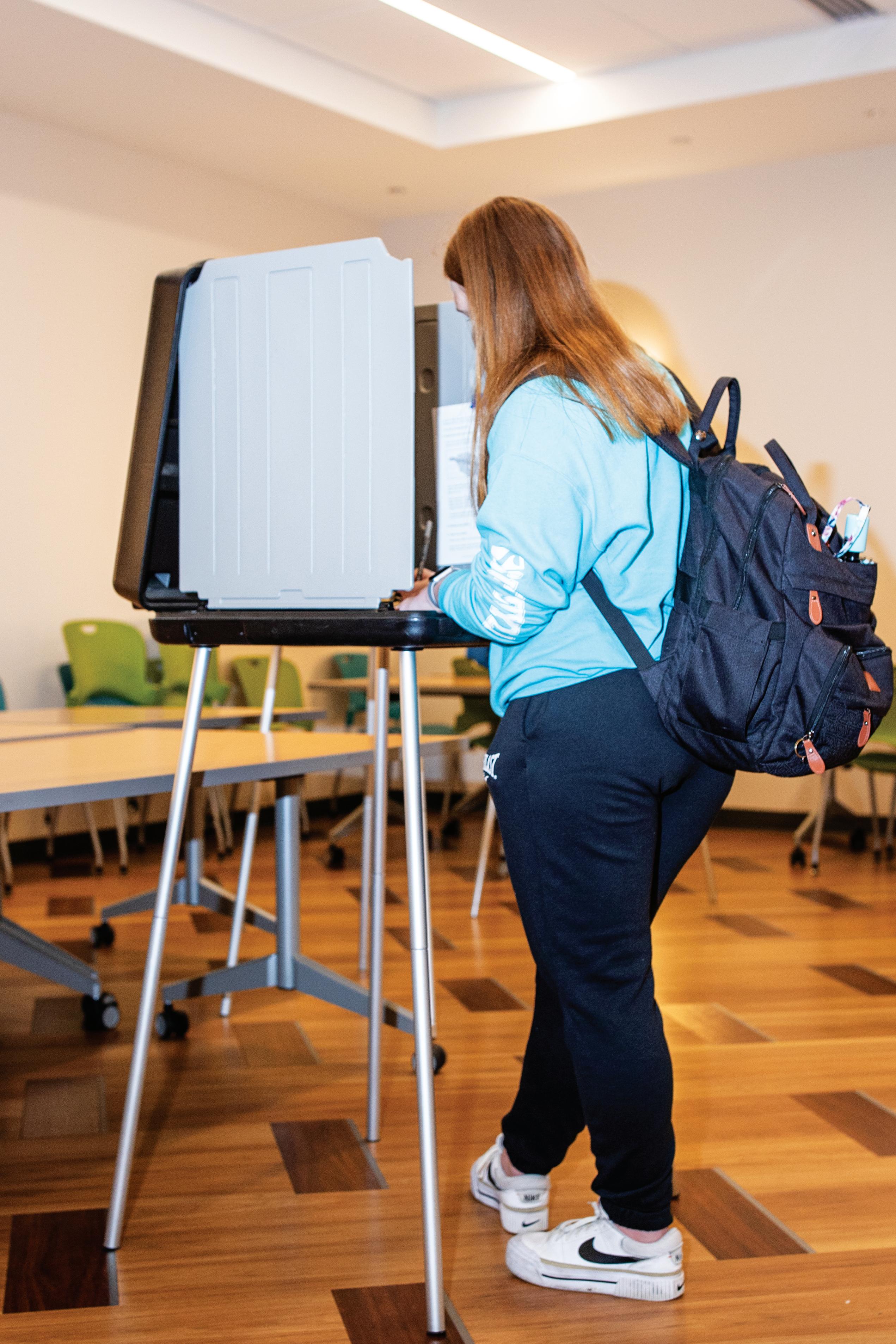







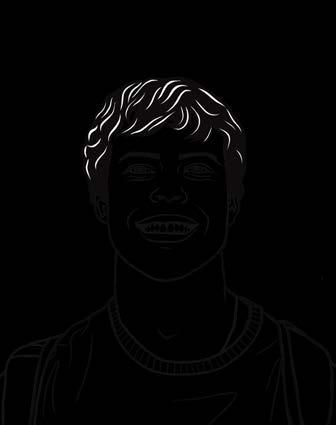


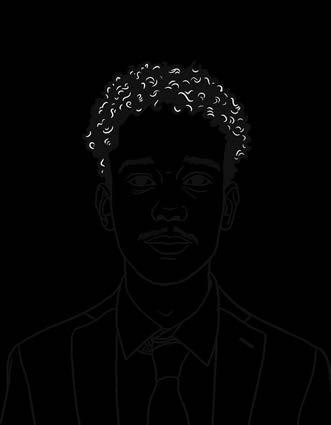






















The Daily Iowan talked to a dozen young voters about the election. Here’s what they had to say.
With 41 million members of Generation Z eligible to vote in the 2024 election, voters aged 18-29 could play a decisive role in the outcome.
In this election, 8.3 million members of Generation Z will become eligible to vote for the first time, according to Tufts.
In the race to the Oval Office, a fall 2024 Harvard Youth Poll found that among likely youth voters, Vice President Kamala Harris leads former President Donald Trump by 28 points.
Young voters, however, are the least likely to vote, with record turnout among the demographic only reaching 50 percent in 2020.
Polls from The Wall Street Journal show a majority of men under 30 prefer Trump to Harris in office. Women under 30 have only shifted farther to the left, with data from the Harvard Youth Poll showing 50 percent of white women and 70 percent of non-white women preferring Harris as the next president.
With election results trickling in from Tuesday night, it’s too early to tell how much of a role young voters played.
The Daily Iowan talked to a dozen young voters on the University of Iowa campus to hear their thoughts on the 2024 election.
Editor’s Note: The Daily Iowan interviewed the students referenced in this story before they cast their ballots.
Liam Halawith, Roxy Ekberg, Mia O’Connor-Walker, and Shreya Reddy contributed to this report.

Roder sees abortion as a top issue and is primarily concerned with the way Roe vs. Wade was overturned and the effects that it had on several women across the country.
“Just seeing the effects, moral aspects aside, that this has had on the livelihood of women is something that is really scary, and people should have the right to choose what they do to themselves,” Roder said.
Roder sees the way that Harris talks about abortion and other issues as more positive and reflective of her own personal views.
“I don’t like Trump as a person, and I don’t think he handled a lot of the things he did while president well for our country. Harris aligns more with my values given her stance on the economy and a lot of the policy she proposes for
For Zachary, voting for the first time and waiting for the results is an exciting and nerve-inducing occurrence.
Zachary pointed to the Jan. 6, 2021, insurrection at the U.S. Capitol and an increasing political divide as reasons for her nerves.
“I’m a little nervous just because of the state that we’re in right now, and how the two sides are just fighting — it’s become a very prominent split,” she said.
Abortion was the most important issue to Zachary in the 2024 election, and she planned to vote for Harris because of her stance on abortion access and reproductive health care.
“I feel like all of my rights have been kind of stripped away from me as a woman,” Zachary said. “As an 18-yearold, I’m a little nervous for the women in this country.” The economy and immigration are also important

Political affiliation: Democrat Top issue: Abortion Presidential vote: Kamala Harris
middle-class people,” Roder said.
Roder disagreed with Trump’s decision to pull out of the Paris Climate Accords and how he handled the pandemic as well as the attitudes he brings to the table.
“His rhetoric — the way he talks about things aren’t really good for our country,” Roder said.
Roder sees the climate as an issue she aligns herself with along with immigration. For Roder, it is important that people not be separated at the border and that both candidates have talked about how they would improve the situation.
“It is important to talk about this [immigration] and humanize people who are coming in from other places,” Roder said.
Political affiliation: Moderate, left-leaning Top issue: Abortion Presidential vote: Kamala Harris
issues to Zachary. She said she finds Harris’ stance on immigration to be more appealing and does not agree with the rhetoric pushed by Republican candidates, which makes the issue tense.
Zachary said America is founded by immigrants and she finds it contradictory that politicians are trying so hard to keep people out of the country.
Despite her concerns about election night, Zachary said she was glad to cast her ballot in the election.
“I’m kind of excited that I get a vote in this one,” Zachary said. “I get to be a part of it, that I actually get to use my vote for something.”
For Waterman, abortion is her top issue this election and is why she planned to cast her ballot for Harris, who has campaigned on reinstating federal protections for abortion access.
After the U.S. Supreme Court overturned Roe V. Wade, a federal precedent that protected a woman’s right to an abortion, Iowa enacted a near-total abortion ban. Waterman said she didn’t appreciate Trump’s role in overturning the protections.
Waterman said the choice has motivated her to vote this year.
“Donald Trump, he obviously like got rid of Roe v Wade, so now it’s a state issue instead of a personal issue,” Waterman said.
“It’s up to Governor Kim Reynolds to decide whether or not I’m allowed to get an abortion,
Cater does not consider himself political and said not much has changed for him since Trump’s presidency compared to Biden’s except for the economy.
Cater planned to cast his ballot in favor of Trump because of his stance on the economy, an issue Cater considered to be the most decisive factor in the election. Concerned with taxes, inflation, and gas prices, Cater said he doesn’t have much of an opinion on issues that don’t affect him personally, such as abortion and border control.
“Obviously [immigration] is a massive thing, but whichever way it sways, it’s not realistically going to impact me in my daily life,” Cater said. “I think that it’s important for a lot of people, and it impacts a lot of people but doesn’t impact me, so I don’t really have a stance on it. I don’t think it’s not important or anything like that. It’s

Political affiliation: Democrat Top issue: Abortion Presidential vote: Kamala Harris
instead of it being my own personal choice, which is what Kamala Harris wants. She wants to reinstate Roe v Wade, which I’m in 100 percent support of.”
On immigration, Waterman said that while she appreciates the need to secure the border, she supports reforming the immigration system to make it easier to immigrate legally. Waterman said it also isn’t an issue that should be as big of a focus as it currently is in national politics.
“There are still people coming in, and I do think that we should be setting up a process that makes it easier for people to become citizens,” Waterman said. “I think it’s a hard process, and that’s why people are wanting to go at it in an illegal way.”
Political affiliation: Republican
Top issue: Economy
Presidential vote: Donald Trump
just not one of my key things I consider when I vote.”
As a Catholic and a first responder, Cater said he understands how important abortion care can be in a life-or-death response but also sees why elective abortions are considered wrong. However, Cater said candidates’ stances on abortion do not impact how he planned to vote.
Cater agrees with Trump’s stance on abortion and thinks it should be up to the states to decide whether abortion care is legal. Carer said abortion should not be an all-or-nothing type thing, and there should be exceptions for rape and the life of the mother.
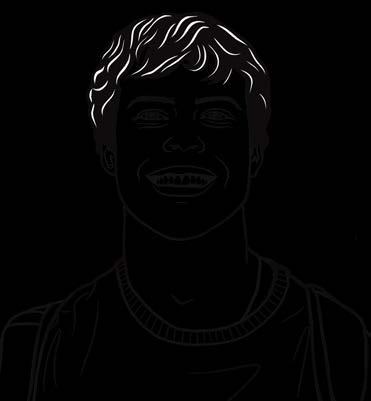
Opinions Editor Carson Hartzog carson.hartzog@dailyiowan.com
Visuals Editor Isabella Tisdale isabella.tisdale@dailyiowan.com
Asst. Visuals Editor Emma Calabaro emma.calbaro@dailyiowan.com
Digital Editor Riley Dunn riley.dunn@dailyiowan.com
Audience Editor Shreya Reddy shreya.reddy@dailyiowan.com
DITV News Director Johnny Valtman johnny.valtman@dailyiowan.com
DITV Asst. News Director Jayce Bertrand jayce.bertrand@dailyiowan.com
DITV Sports Director AJ Reisetter aj.reisetter@dailyiowan.com
DITV Asst. Sports Director Brady Behrend brady.behrend@dailyiowan.com
DITV Tech Director Madison Johnson madison.johnson@dailyiowan.com
BUSINESS STAFF
Business Manager Debra Plath debra.plath@dailyiowan.com 319-335-5786
Advertising Director/ Circulation Manager Juli Krause juli.krause@dailyiowan.com

Ku said he was undecided about who to vote for in the Nov. 5 election. He said that he did not know enough about the candidates when the The Daily Iowan spoke with Ku in October. What Ku does know, though, are his priorities. His top voting issue is foreign policy, particularly regarding Taiwanese independence. Ku is also prioritizing policy that targets climate change and promotes sustainability and said that he’s concerned that, as industrialism increases, the world climate is in jeopardy. In regard to the economy, Ku said he’s been pay -
Chriswell is excited to vote because it will be her first time — not because she’s particularly excited about the candidates.
“It’s my first election, so I’m excited,” Chriswell said. “I wish maybe I had better options. I’m not saying that Kamala’s bad. And I’m like it’s a lesser of two evils type situation. So, I’m not that stoked about it, but I’m excited for my voice to be heard, especially in this election.”
Chriswell said abortion is her top issue this election. She said the decision should be between a woman and her doctors.
“At the end of the day, no woman has an abortion because they want it,” Chriswell said. “They have it because there’s a situation of desperateness. “It’s not like, ‘Let me get an abortion

ing particular attention to the rise of and the technological sector as a whole and emphasized the growing number of semiconductors being built. While he sees the tech sector advancing rapidly, Ku also thinks other areas of the economy are suffering.
On reproductive rights, Ku said both Kamala Harris and Donald Trump’s policies are on the radical end. Ku thinks somewhere in between each of the candidates’ views exists an approach to reproductive rights that is ethical and moral, which he thinks should be the end goal. “The most important thing for me is ethics,” Ku said.
Political affiliation: Democrat
issue: Abortion Presidential vote: Kamala Harris
because I want a car,’ or something. It’s not something like that. It’s like this is a life-or-death situation, financially, I can’t afford it.”
Chriswell said she’s not too concerned about the economy right now as the U.S. has a history of a strong economy, no matter how much it waxes or wanes.
On immigration, Chriswell said U.S. immigration policy should be more kind and let more people in legally.
Herrling said she planned to vote for Trump this election because of his strong economic policies, since she pins taxes as her top issue.
Herrling feels like the economy could be doing better than it is right now, and she believes Trump’s policies will help.
“I think he has policies that will grow the GDP instead of making it worse, along with increasing or decreasing the unemployment rate and things like that,” Herrling said.
Herrling said she thinks immigration is very important to society and is the foundation of the U.S. but would like to see stricter border control at the U.S.-Mexico border.
“I think there needs to be stricter border control,
Badr’s decision to not vote in the election stemmed from his belief that both options have their pros and cons, and he did not believe in either one.
“I don’t believe in the Republican side or the Democratic side. They both have pretty bad connections,” Badr said.
For Badr, the ideal candidate would be someone who wants to help with issues at the state level before sending aid to other countries, including affordable health care, homelessness, and student debt.
Badr sees the state of the U.S. economy as “pretty bad,” citing the increase in gas prices and prices as a whole. Badr aligns more with the Republicans when it comes to the economy because he wants to see gas go down.


whether that is implementing ways to process people that want to come here so that they can become legal citizens,” Herrling said. “I think there needs to be improvements in the processing so that people are more inclined to come over legally versus illegally.”
Herrling said she is pro-choice and that Trump’s current position on abortion lines up with her own. She said there should be limitations on abortion but that it should still be accessible.
“I think there’s been a little confusion on whether [Trump] is pro-life or pro-choice, but I think Vance cleared that up and said he is prochoice,” Herrling said. “So I mean, I’m in line with that. I think he wants to set a certain term where you cannot get an abortion past a certain amount of weeks. And I agree with that completely.”
Political affiliation: Independent Top issue: Economy Presidential vote: Non-voter
“Sure, you might get a three percent increase at your job, but everything else has also increased, so three percent does not really feel like a raise,” Badr said.
On issues like abortion and immigration, Badr finds common ground with Democrats, believing that anyone who wishes to come to this country should be able to do so legally, without having to risk their lives.
“Women should have their own choice over their body. I really don’t think other people should have control over that,” Badr said.
Martin, a seasoned voter, cast his ballot for Kanye West in the 2020 presidential election.
He believes former President Trump’s policy issues, particularly about border security and abortion, align more with his political views than those of Harris.
“It is necessary for a sovereign country to know who we are letting in, because then all the good people that deserve to be here and want to come here the right way, can’t,” Martin said.
Martin sees abortion as a right that should be left up to the states and believes that abortion is “morally wrong.”
As a first-time voter, Khadiya’s excitement to vote was stunted because it is difficult for her to find a candidate who supports Palestine. Khadiya marks the Israel-Hamas war as the biggest issue in the election.
Khadiya is in support of Harris’ stances on reproductive rights, immigration, and gun control reform. However, she said she is wary of Harris’ support of Israel.
Leading up to the election, Harris opened up the discussion, urging for a two-state solution. Khadiya said she hopes Harris will continue the conversation if she is elected.
Immigration is also a large concern for Khadiya. She supports immigration but also thinks the number of people coming in should be lowered so capacity and resources aren’t stretched thin.

Political affiliation: Republican
Top issue: Abortion Presidential vote: Donald Trump
“We [Republicans] don’t view it [abortion] as a reproductive right. We view it as the right of the child,” Martin said.
Martin voted for West because, at the time, he did not want to vote for former President Donald Trump or Hillary Clinton.
“I knew I was throwing it [his vote] away, but I didn’t feel morally like voting for Trump,” Martin said.
Martin voted for Iowa Gov. Kim Reynolds back in 2022 and planned to vote for Mariannette Miller-Meeks, R-Iowa, this year. Martin said not voting would mean giving a vote to the candidate that is “worse.”
“In my mind, there is clearly one option, and so I have taken the lesser of two evils stance,” Martin said.
Political affiliation: Democrat
Top issue: Israel-Hamas war, abortion Presidential vote: Kamala Harris
“I do think we need to control [immigration] but in a much more humane way,” she said. “Treating them more like humans and less like illegal aliens or like political pieces in a game.”

Khadiya said the current immigration process needs to be reformed, as many people who cross the border are in life-ordeath situations. She supports speeding up the legal process of immigration.
Khadiya said social issues outweigh others like the economy because of where she is in life.
“Because I’m a student, the social things are more important to me,” Khadiya said. “I’m sure once I get into the professional setting, then the job market will become a bigger concern for me.”
Connolly’s key voting issue is reproductive rights, and she feels these rights are currently being threatened. She is fearful of a future where women will not be able to access reproductive health care and emphasized reproductive health care extends beyond abortion and into other health services. Connolly believes Harris is the candidate who would best protect these rights and thinks Harris could break the cycle of men dominating the policy decisions surrounding reproductive health.
“As a woman, it would be nice to have a woman in office who has that perspective on reproductive rights, personally,” Connolly said.
Beyond reproductive rights, Connolly also wants to
Sutton, who immigrated to the U.S. from the Caribbean, hopes to make a difference with her vote.
She identifies strongly with Harris, whose experience she believes is necessary to have, particularly when talking about immigration.
“She has parents who were immigrants and understands the struggles of being the child of an immigrant. It is easy to talk about immigration and be completely far away from the issue when you as a person have never had to adhere to these rules,” Sutton said. Sutton said she understands the issues people have with illegal immigration and that changing the requirements for coming into the country is important.
To Sutton, Kamala Harris has the political experience and qualifi -

Political affiliation:
see more ethical border security practices.
While believing that it’s important for the country to have a secure southern border, Connolly thinks current border security practices are unnecessarily harmful to those trying to enter the country. Connolly wants to see border security that functions efficiently without causing harm.
“There’s a certain way to deal with border security that isn’t racist, that isn’t putting people in cages,” Connolly said. “I think that the country should be more secure, but there’s a way to do it that isn’t hurtful to people.”
Editor’s Note: Sophia Connlloy is a former staff member at The Daily Iowan
cations to be the next president of the U.S.
“I appreciate that she is a woman of color, and I feel like she relates to Americans more based on her upbringing,” Sutton said.
Harris also reflects Sutton’s views on abortion. To Sutton, abortion means not forcing people to do what other people think is right for them.
“It is a free country, so I feel like you should be free to do what you want with your body, and it shouldn’t be public knowledge. It should just be,” Sutton said.

The cross-disciplinary project trains AI to recognize harmful actions in care settings.
Emma Jane News Reporter news@dailyiowan.com
In a cross-disciplinary effort, a University of Iowa engineering professor and a social work professor are creating software that leverages artificial intelligence to detect violent behavior, aiming to enhance intervention strategies. The technology functions like an advanced nanny cam designed to detect physical abuse using artifical intelligence. The device remains dormant until it detects potential abuse, at which point it activates to record the incident and sends the footage to the caregiver, who can then choose to forward it to authorities if necessary.
UI Mechanical Engineering Professor
Karim Abdel-Malek said the idea for this technology came from his work as the director of UI’s Virtual Soldier Research Program, which develops predictive models to analyze body movements and interactions in virtual environments for
“If we could use this for soldiers, why not use it for other things?”
Karim Abdel-Malek UI mechanical engineering professor
military applications.
“So that led to an idea that if we could use this for soldiers, why not use it for other things?” Abdel-Malek said.
Abdel-Malek and a team of UI researchers patented this technology in 2020, at which time Abdel-Malek said he wanted to collaborate with an expert in child abuse. He envisions the first applications of this technology in settings like daycare, babysitting, and elder care, where instances of abuse can often go undetected and unreported.
He reached out to three UI faculty members in the field of social work and said Aislinn Conrad was the first to respond.
“I got a cold call from Karim last September, and he didn’t even say what it’s about,” Conrad said. “But I just knew, I just had this feeling, this is going to be a big deal.” Before her appointment at UI, Conrad worked as a child welfare investigator and in foster care reintegration. She later earned a Ph.D. and a Master of Social
Work to further specialize in child welfare.
“I decided to dedicate my research life to child abuse prevention because, unfortunately, in society, violence feels like a very intractable problem,” Conrad said, noting that one in nine children will experience abuse or neglect by the age of 17, and one in three women will experience violence in their lifetime.
“And that’s not even accounting for people who are elderly, who can experience horrific acts of violence at the hands of caregivers,” Conrad said.
She believes this technology will be a transformative way to overcome the challenge of collecting evidence when investigating reported incidents of abuse retroactively.
In Iowa, the Department of Health and Human Services assessed 26,613 reports of child abuse in 2023. Of those, 70 percent — more than 18,000 children — resulted in a finding of “not confirmed,” indicating that there was insufficient evidence to substantiate the abuse allegations.
“This is a game changer,” Conrad said.
“This is going to change the paradigm of how we respond to violence in a meaningful way.”
Abdel-Malek added that this technology aims to identify abuse before it escalates and causes noticeable signs.
“The idea here would be before or just right at,” Abdel-Malek said. “So right away, you can interfere.”
Conrad emphasized the importance of this technology for children who are victims of abuse, as they cannot often articulate their experiences or understand the need to report them.
She added that it will create the opportunity to protect children proactively and course-correct with the aggressor.
“Sometimes it’s a lack of emotional regulation. It’s a lack of understanding that the behavior is not okay,” Conrad said. “There’s a lot of ways that this is going to alter the landscape for everybody.”
Abdel-Malek said UI students will have an important role in the ongoing development of this technology.
“We’re going to need actors to replicate different behaviors on dummies,” AbdelMalek said, explaining how the AI will be trained.
He emphasized that the technology’s effectiveness depends on collecting data from people of diverse heights, weights, hairstyles, and clothing, allowing it to accurately recognize a wide range of abusive actions.



kept it open for 90 years, but it has been the place in Iowa City for numerous political candidates, governors, and presidents to come and shake hands with residents of Iowa City.
Campaigning is an integral part of an election; in Iowa City, former Presidents Barack Obama and Bill Clinton have visited a local restaurant in the past decades. However, there has been little political activity and shaking of hands at the Hamburg Inn No. 2 in Iowa City this election cycle.
The voting process for a country as large as the U.S. naturally breaks the country into many different sections, down to county. The localization in these elections allows each area to communicate its collective beliefs, and these beliefs can often characterize the people and social landscapes.
Despite the wide opportunities to vote locally, disseminated by flier and text message, there is a place in Iowa City that has attracted political minds, social discourse, and a microcosm of the local political landscape in a way little seen elsewhere.
Hamburg Inn No. 2, named “No. 2” when it moved to its new location at 214 N Linn St. in 1948, has been an Iowa City restaurant specializing in breakfast food since 1935. Not only does it serve the quality food that has
The restaurant seems to buzz for breakfast, lunch, and dinner. It is a quaint place with a variety of seating fit into a small area; unlike a few downtown Iowa City restaurants, there never seems to be a slow period. Someone eating alone at Hamburg is never really alone — a fact that contributes very much to its political discourse setting.
Hamburg Co-owner and Director of Hospitality Stephanie Breitbach, who thought the restaurant in 2023, said the trend of politicians visiting the restaurant began with former president Ronald Reagan in 1992.
“Since then, it became almost an urban legend in itself because you started to see these candidates coming by,” Breitbach said.
The walls are adorned with pictures of politicians, signed photographs, and various campaign stickers. From the entrance, the back left corner features a picture of former Iowa Gov. Terry Brandstad.
Breitbach said that despite some outward appearances, the Hamburg has no intention
to push political ideas. Instead, the restaurant has organically become a place for political interaction.
“We are providing a place for people to talk about ideas, talk about their community, and that lends itself to the political side of it,” she said.
The restaurant even appeared in “The West Wing,” a political drama that aired from 1999 to 2006.
However, the location offers more than the abstract concept of discourse; an ideation of former owner Dave Panther, Breitbach said, is the restaurant’s “Coffee Bean Caucus.”
The caucus features several jars lined atop the windowsill near the entrance. Each jar is decorated with a candidate’s name, and at the check-in table is a jar of coffee beans with which patrons can vote.
One more jar was added recently, as the jar marked “Harris” was overflowing and required a new receptacle to keep counting votes.
The tradition has held strong through changing owners, which Breitbach said represents a strong Iowa City community despite a changing political landscape.
“It is so important to the community in
continuing that sense of place that Iowa City has and so you can’t really do any work without a ‘Coffee Bean Caucus’ at this point,” Breitbach said.
The jar dedicated to former President Donald Trump is about half full, while the remaining jars for older, pre-primary candidates are nearly empty.
The coffee bean caucus and Hamburg itself resonate with local Iowa City residents, demonstrating an underestimated but critical means for elected officials and candidates to interact with the people.
Iowa City resident and political organizer Barbara Helmick, leaving Hamburg, said the coffee bean caucus is a way to brighten up politics for the community.
“It’s great fun,” she said. “I’m totally excited about making politics fun again.”
Alongside Helmick stood Iowa City resident Ron Clark, who said the caucus is a tradition that will remain strong in the face of political change. He himself has cast a bean many times in the past.
“It’s a grand tradition where politicians have come to stake a claim on Iowa City’s voters and get a sense of who we are,” he said. “The tradition of the coffee bean caucus endures.”
John Deere has laid off hundreds of workers in eastern Iowa in recent months. Evan Watson News Reporter news@dailyiowan.com
There is a specific pattern in the Midwest farming industry, and Iowa is no exception. Iowa is the second largest agricultural exporter in the U.S. according to the Iowa Farm Bureau, which also describes agriculture as vital to the state’s economy.
The pattern lies in the fact that this continuous and enduring industry — evidenced by the fact that 85 percent of Iowa’s land is farmed according to Living History Farms, — has a tendency toward fluctuation and, in the recent planting and harvest seasons, has been trending downward.
Deere and Company, commonly known as John Deere, is an American agriculture, forestry, and other heavy machinery manufacturing corporation. Various layoffs have occurred in at least three different John Deere manufacturing plants in eastern Iowa over the past few months, according to the Iowa Worker Adjustment and Retraining Notification Act notification system. In fact, these plants, located in Dubuque, Davenport, and Waterloo, are expecting more layoffs soon. However, despite the previously stated cyclical nature of agriculture, people who are geographically connected to the industry and its other markets are not always as elastic.
In October, the John Deere plant in the Quad Cities laid off an additional 287 employees. This comes after the Waterloo and Dubuque plants also laid off hundreds of workers earlier this year. Some of these employees are not just manufacturing workers but salaried, white-collar employees working in administrative and office positions.
In an email to The Daily Iowan, John Deere Public Relations Director Ken Golden wrote the reason for the layoffs is two-pronged. He wrote the weakening farm economy is responsible for the company choosing to look at layoffs as a current solution. Additionally, John Deere has seen a decrease in customer orders for their equipment, he wrote. He wrote that the U.S. Department of Agriculture is expecting five percent
lower crop receipts. Commodity prices also continue to drop significantly by over 30 percent. This trend is not limited to John Deere. Multiple other agricultural manufacturers are facing hardships. According to Farm Progress, numerous other manufacturers have resorted to layoffs as a result of downtrends in the market at the hand of continued inflationary pressures combined with lower market performances typical in the cyclical model. Johnson County farmer Jim Thompson, who uses John Deere equipment, said commodity prices, income, and business expansion are all interrelated. This is true for any business, but considering this model’s longer lifespan of the inputs involved in agriculture, the picture of several-year-long trends becomes clearer. Thompson said Johnson County farmers, among others in the Midwest, are
seeing a record crop during this year’s harvest. A fact of economics is an increased influx in supply ultimately causes a lower price per unit, a truth of markets that has inexorably been realized.
This reduction in commodity prices has resulted in generally lower income, Thompson said, which means upgrades to existing machinery and new machinery purchases are not on the minds of many farmers, including himself.
Agriculture inputs are somewhat limited. Farmers first need land, which is a longterm asset with little necessary maintenance beyond things like drainage tile. Farmers need buildings to store equipment, and they need seeds to plant. Farmers especially need equipment manufactured at the John Deere plants, which costs millions of dollars. However, once that equipment is purchased and faces occasional maintenance, most farmers use that equipment for a long lifespan.
Beyond typical factors like labor and capital, farmers conceptually need little else. The lengthy lifespan of most of these inputs contributes to the rise and fall in the farm economy. Thompson said higher income in previous years led to any necessary equipment purchases or repairs being done then as opposed to now.
“It’s kind of a cycle, for the most part, where there’s not as many dollars there to be putting back into equipment,” he said. “It’s not a John Deere issue, in my opinion. Farmers across the board are not spending as much money right now.”
So, with the equipment largely paid for and maintained, it is clear to see why farmers are demanding less equipment from manufacturers.
AGCO announced layoffs earlier this month and anticipates a 10 percent reduction in its production. In August, Alamo Group, an ag manufacturer based in Seguin, Texas, announced layoffs at its Gibson City, Illinois, facility.
Farm Management Specialist Ryan Drollette at the Iowa State University Extension Office in Johnson County said many manufacturers have laid off workers. He said Kinze Manufacturing in Williamsburg laid off 25 percent of its workforce this summer.
Drollette said Johnson County farmers especially have seen a larger crop than in previous years because of increased precipitation. He describes the supply and price relation economics as prices reacting to inflated supply and ultimately creating conditions that leave machinery manufacturers vulnerable.
“What you get is a chain reaction effect,” he said. “You have independently owned equipment dealers, and they have to worry about how much they need to make and how much they’ll sell. Some manufacturers need to auction machinery off just to get it off the land.”
Drollette said agriculture manufacturing and production is a global export market, and demand in the rest of the world for manufacturing services affects people as local as farmers in Johnson County who contribute to the agriculture
One student regent is not enough to reflect the needs of over 70,000 students.
DI Editorial Board opinions@dailyiowan.com
After legislation resulting in massive changes to diversity, equity, and inclusion, or DEI, programs was introduced during Iowa’s 2024 legislative session, the Iowa Board of Regents approved recommendations to alter programming across the state’s three public universities.
These recommendations led to the closure of DEI offices at Iowa State University and the University of Northern Iowa, as well as the restructuring and renaming of the University of Iowa’s office.
As an organization, the regents have the power to change and adapt all initiatives of the UI and approve funding for major projects, which involves allocating taxpayer dollars. The regents’ authority extends to the daily lives of students enrolled at public universities in the state and affects the type of education they receive.
The drastic changes to DEI drew students’ attention statewide — and not in a good way. Protests sprung up at the UNI and ISU, and many students at the UI expressed fear.
These decisions, seemingly oblivious to student concerns, made one thing crystal clear: The Board of Regents does not reflect the priorities and values of the students enrolled at these institutions.
What is the Board of Regents?
In Iowa, the Board of Regents is a nine-member group that governs the state’s regent universities — ISU, the UNI, and the UI.
According to the Iowa Administrative Code Chapter 262, those who serve on the board are appointed by the governor and subject to confirmation by the Iowa Senate. Currently, eight of the nine seats are filled.
Among the regents, no more than five members can belong to the same political party, Josh Lehman, senior communications director for the Board of Regents, wrote in an email to The Daily Iowan. Lehman also wrote that one of the regents must be a full-time student, either undergraduate or graduate, at one of the three universities represented when they are appointed.
The student regent position was established during the Vietnam War, according to the regents’ website. There was reportedly so much dissent with administrative decisions that students began demanding a seat at the oversight table.
The call for student representation on the board stuck, and in 1988, House File 2046 was passed, requiring the inclusion of a student regent from then on.
Lehman said university presidents typically choose candidates for the student regent, and then the names are forwarded to the governor for selection.
The universities rotate the student representatives. The most recent student regent, Abby Crow from the UI, had her last meeting over the summer. The next representative will
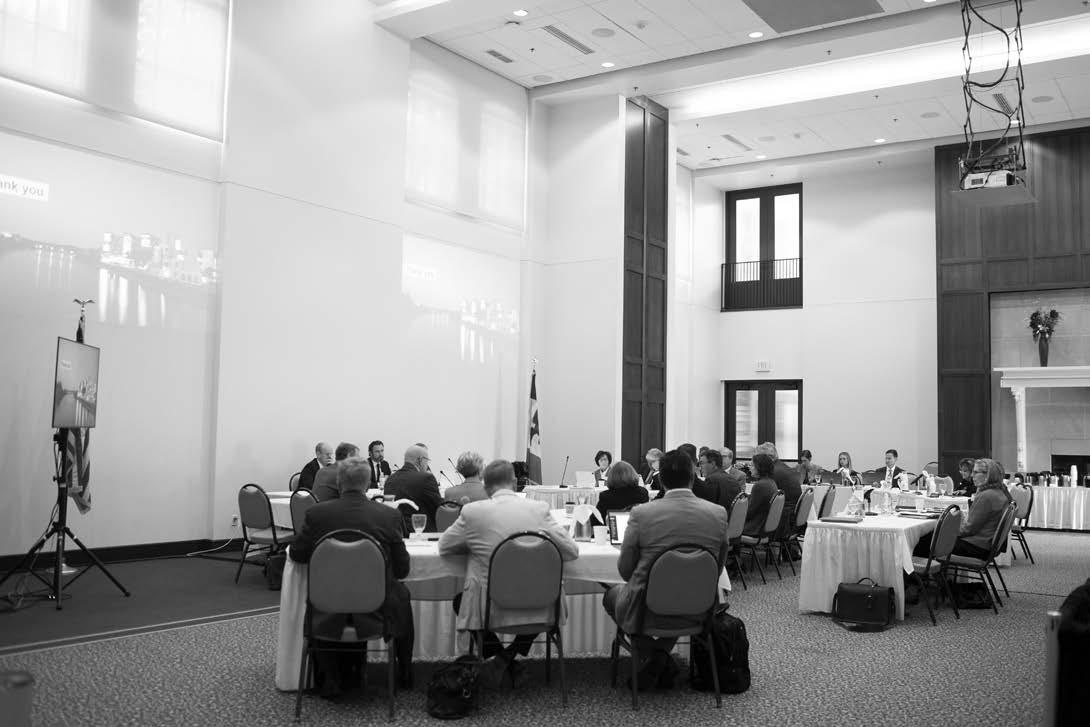
come from UNI, Lehman wrote.
It has been 36 years since the student regent requirement began, and it is no longer enough.
The UI, ISU, and UNI have more than 70,000 undergraduate and graduate students. One student from one university cannot adequately represent such a large and diverse population.
How do states compare?
Iowa is not an outlier. Governor appointment is the vast choice for states across the nation. However, four states — Colorado, Nebraska, Nevada, and Michigan — have implemented district-level elections for some of their state university regents, an approach Iowa should consider.
Michigan is unique among these states. Three of its 15 state universities — The University of Michigan, Michigan State, and Wayne State University — are governed by regents elected through statewide elections held every two years for all nine seats.
The University of Colorado also elects one candidate from the state at large, and the University of Nebraska has one non-voting student regent. These election models provide stepping stones for Iowa to follow and adapt.
A significant change from the most recent legislative session was Iowa Gov. Kim Reynolds’ repeal of gender balance requirements on boards and commissions, which directly affects the Board of Regents.
Lehman wrote that the regents fall under the new legislation, meaning gender balance is no longer required when considering appointments.
“I believe that our focus should always be on appointing the most qualified people,” Reynolds said in an April press release. “That includes engaged citizens with a genuine interest in serving their state or local community, as well as individuals with valuable experience that directly relates to the position.”
So, with this change, it is hypothetically possible for a future board to be composed entirely of men, who could make decisions affecting female or female-identifying students, such as in Title IX discussions.
Lehman wrote that public comment during regent meetings is how students can ensure their voices are heard by these institutional officials.
“Student success and the academic experience are the top priorities of the Board of
Regents,” Lehman wrote. “The Board has frequent public meetings and holds a public comment period at its regular on-campus meetings where anyone can express their concerns. Board members also regularly communicate with the student government elected leadership on issues that are of importance to students.”
However, to ensure all students’ voices are truly heard, Iowa’s regents need to be elected.
Student government leaders on campus — those the regents primarily speak to — don’t adequately reflect their schools.
In the case of the UI, the undergraduate student body sits at around 22,000. In the most recent Undergraduate Student Government election, approximately 2,015 students voted for the presidential and vice presidential ticket — less than 10 percent of the student body.
Those who serve as elected campus leaders often have a level of privilege, enabling them to work in mostly unpaid or underpaid positions while still affording tuition, rent, and other expenses.
Despite the low voter turnout on campus, we have faith that turnout would be higher in an election for a powerful body like the state Board of Regents.
Even if voter turnout is not ideal, a percentage of people voting is better than one person making all appointments.
Everyone should visit and learn about artist Keith Haring’s contributions to Iowa City.

Cole Walker Opinions Columnist opinions@dailyiowan.com
Last week, I had the pleasure of visiting the Stanley Art Museum and experiencing its current exhibition. As I walked into the gallery, I had very few expectations but was intrigued by the building’s exterior advertisement for the special exhibit. I bounced up the stairs and past the African art wing to find a large wall intersecting the adjacent room. Behind the partition was work created by none other than the exhibit’s namesake, Keith Haring. Despite the space being small, the exhibition was truly a worthwhile experience. I was blown away by the exhibit and its content, and its message resonated with me long after I left the building.
This special exhibition is dedicated to Haring’s work, specifically when he visited Iowa City many years ago. I believe anyone with the time should seriously consider visiting the Stanley Art Museum to experience “To My Friends at Horn: Keith Haring and Iowa City” firsthand.
This exhibit is curated specifically toward Haring’s work in the area in the late ‘80s and serves as a beautiful tribute to the artist’s
Columnists: Muskan Mehta,
contribution to the creative world and his impact on youth through his imaginative embrace of expressionism. Its combination of fun anecdotes, compelling stories, and captivating works of art prove that regardless of who you are, you need to stop in.
The origin of this exhibit dates back to 1984 when longtime Horn Elementary teacher Colleen Ernst, better known as “Dr. Art,” sought to introduce her class to contemporary art. Ernst was a fan of Haring’s work and thought she should try to contact the New York-based artist to get more information about his style and invite him to Iowa City to speak with her class.
The two became pen pals, and shortly after the first message was sent, Haring came to Iowa and did art workshops with Horn students as well as created a cookbook cover for the Horn Elementary school PTA.
As the years progressed, “Dr. Art” continued her correspondence with the artist, and in 1989, Haring returned to Horn and painted his famous library mural, which is now on display at the Stanley Art Museum. The mural features Haring’s typical shapeshifting-style characters with pops of colors intertwined, contrasting the harsh white corkboard background.
The Stanley Art Museum’s website states: “Opening on Keith Haring’s birthday, this exhibition celebrates the artist’s legacy and honors the many individuals who shaped
Lein, James McCurtis, Caden Bell, Cole Walker, Carson Hartzog, Jackson Mendoza Editorial
Martin-Trainor, Marandah Mangra-Dutcher, Jack Moore, Stella Shipman, Carson Hartzog, Charlie Hickman
COLUMNS, CARTOONS, and OTHER OPINIONS CONTENT reflect the opinions of the authors and are not necessarily those of the Editorial Board, The
author may be involved.
EDITORIALS reflect
Iowan, or other organizations
or
his visits to Iowa City during the 1980s. The 1989 mural Haring painted for Ernest Horn Elementary School, which is on loan to the Stanley Museum of Art during the school’s renovation, anchors the exhibition and is accompanied by other works of art, photographs, and archival ephemera.”
This exhibit has caught the attention of acclaimed critics, as well national news sources like The New York Times, which placed the Stanley on their list of museums people should consider visiting this year. The comprehensive catalog of artistic experiences, which includes exhibits and exhibitions from around the nation, claims that the Stanley Art Museum’s “To My Friends at Horn: Keith Haring and Iowa City,” is a must-see for people of all ages.
The gallery also discusses Haring’s HIV-positive diagnosis and later death, which came in 1990 from AIDS-related complications. The gallery is filled with facts about his fight with the deadly disease, as well as the University of Iowa’s role in supporting students with AIDS and conducting research related to the epidemic that shook millions in the 1980s.
Lauren Lessing, the director of the Stanley Art Museum, commented on the importance of featuring information about Haring’s battle with the illness and the university’s connection with Haring when she wrote: “The fact that Haring had AIDS at
the time of his second visit to Iowa City prompted the Horn Elementary School to hold an assembly for parents and children to educate them about the disease and dispel unwarranted fears. In a letter, Haring told Ernst that learning of this assembly made him happy he had the courage to tell people about his illness.” Haring even claimed, “Education is the key to beating this thing” when discussing why more schools and institutions of higher learning should encourage conversations around STDs and AIDS to help those who are already affected.
This same concept — fearing what one doesn’t understand — is a consistent theme throughout the exhibit and heavily influences the curation of different paintings and prints. This sentiment is also expressed in one of his most famous quotes, prevalent on the Stanley Art Museum’s website: “If the public is afraid of art, should we be afraid of what we have done to make the public afraid of art?”
Overall, whether you are a fan of contemporary art or not, “To My Friends at Horn: Keith Haring and Iowa City” is a worthwhile experience that every student and community member should explore going to see. The Stanley Art Museum is open six days a week, but this special exhibit ends in January, so get there before it’s too late.
Jami Martin-Trainor Executive Editor
jami.martin.trainor@dailyiowan.com
This is the first installment in a multipart series about high school graduates choosing trades over college.
Nikkia Evans’ hand, covered with a sterile, black glove, stays steady. The tattoo machine she holds vibrates, humming loud enough to hear from across the parlor. Her hand, however, is still as stone.
She dips the needle into a tiny skullshaped cup of black ink, picking up color on the tip of her personalized, dalmatian-spotted tattooing tool. With a small, steady movement, Evans has permanently changed her client’s skin.
And she’s only an apprentice.
The cost of college has skyrocketed in recent history with tuition for in-state students at the University of Iowa increasing by over $1,500 in the past 10 years alone. These growing fees combined with increased demand for skilled trades have led to more young people turning to apprenticeship programs instead of college after high school. Such was the case for Evans.
After graduating from high school in Cedar Rapids, Iowa, in the spring of 2021, Evans gave college a try. She first enrolled at Iowa State University to study animal sciences, but she eventually left and moved back home.
She then tried taking some classes at Kirkwood Community College in her hometown, but that didn’t stick, either.
“It didn’t really fit with me,” Evans said. Evans took a full-time job at Collins Aerospace, a Cedar Rapids-based company in the aviation industry. Evans described the work as continuous, repetitive, and draining. It wasn’t for her.
“My entire life, art has been the only thing I ever could just sit for hours and focus on,” she said.
That passion has since translated into her new prospective career. With her dad acting as her mentor, Evans is working toward becoming a tattoo artist. Evans’ digital tablet is now full of various designs and patterns she has drawn, some for clients and some for herself.
Evans’ nails, decorated with tiny mushrooms on each finger, make a tapping sound as she zooms in on her latest sketch for a walk-in — a disposable vape. She’s talking to her client, explaining how the lettering can’t be too small, or the tattoo won’t last. She pulls up her black sweater to reveal a tattoo on her arm where the linework in a flower is starting to bleed together.
She leaves the choice up to her client, who ultimately took her advice. Evans prepares the larger stencil, curly hair tied back to ensure her vision is unobscured as she prepares to tattoo the client.
“It’s going to be on someone else’s body forever,” Evans said while holding up prints of two different versions of the sketch, comparing them on her client’s leg. “So, you have to do what they actually want.”
Evans’ choice to pursue an apprenticeship instead of a traditional four-year degree is uncommon, but she is part of a growing community. According to data from the state of Iowa, there are 10,289 active apprentices in Iowa as of 2023. That number is up from just 8,844 active

apprentices in 2022 — around a 16 percent increase.
The number of training programs available is also increasing. In 2023, there were 169 active programs added in Iowa, bringing the total number in the state to just under 1,000.
Jenny Foster, the executive academic dean for manufacturing, engineering, trades, and transportation at the Des Moines Area Community College, said the conversations surrounding the trades have shifted since the COVID-19 pandemic.
Rather than parents and high school students coming to Foster’s office needing to be convinced that a four-year institution is not the only path, families are bringing up these alternatives on their own. Now, Foster gets to share the multitude of options that exist for students to potentially pursue.
“There was a realization about how necessary all the trades were and that all of these opportunities were just out there for folks,” Foster said.
Foster also said among young people, there is more recognition that trades offer high paying jobs and long-term stability. According to ZipRecruiter, the average salary for tattoo artists in Iowa City is $52 per hour.
The selection of trade programs at the Des Moines Area Community College provide a direct pipeline to apprenticeship programs. The main difference between directly becoming an apprentice and enrolling in a community college program is the freedom to explore different options and the allocated room for error.
“Students can fail here and make mistakes,” Foster said. “That’s kind of what we’re here for.”
In Iowa, the keep only certification requirements are the completion of bloodborne pathogen and first-aid training, and tattooing must take place in a licensed establishment. These limited parameters mean apprenticeship programs can look entirely different depending on the shop in question.
An apprenticeship does not necessarily mean college is out of the question. Rachel Chen is currently balancing work as a full-time student at the UI majoring in psychology and art while running her own tattoo business.
Chen described her apprenticeship as “non-traditional,” with her mentor living in Des Moines while Chen was stationed in Iowa City. Chen would send over images of her art, and her mentor would send instructional videos.
The original plan was for Chen to work at her mentor’s shop after completing her apprenticeship. However, when longterm academic goals kept Chen in Iowa City, she decided to open up her own independent shop.
While the money is not always stable — some weeks, she’ll make up to $600 while others her income is closer to $60 — Chen said her work helps pay for school.
Evans’ apprenticeship program was done directly through the tattoo parlor she currently works at, Neon Dragon in Cedar Rapids, Iowa.
See more online
Read more about Nikkia Evans and the tattoo industry at dailyiowan.com.
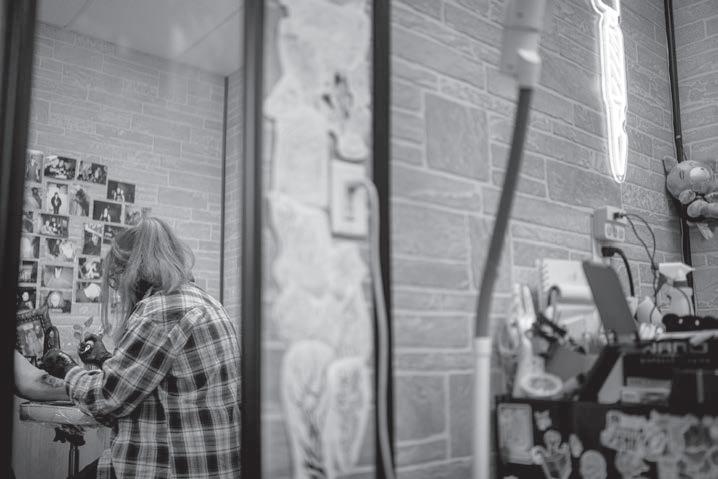

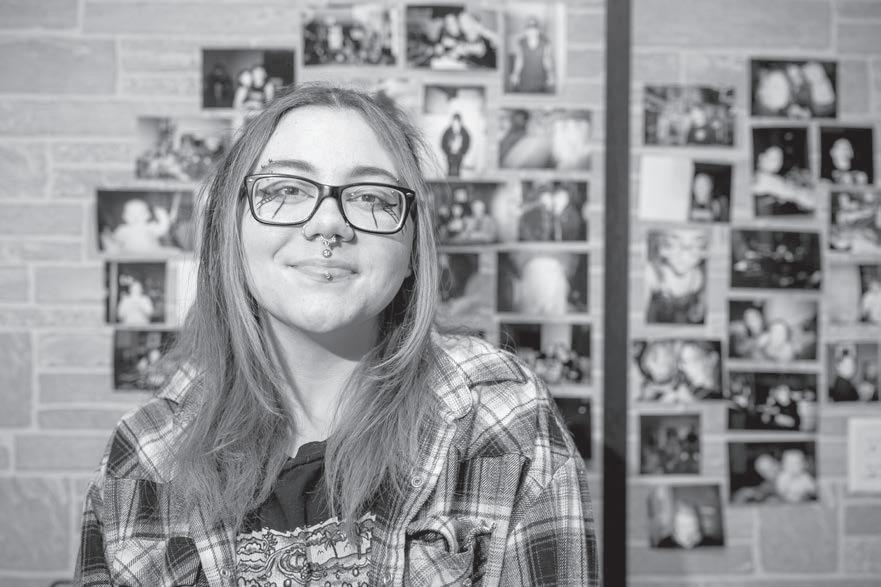
Edited by Will Shortz No. 1002




Just days after an unexpected Des Moines Register/Mediacom poll was released, voters flocked to precincts around Johnson County to participate in selecting the next president.
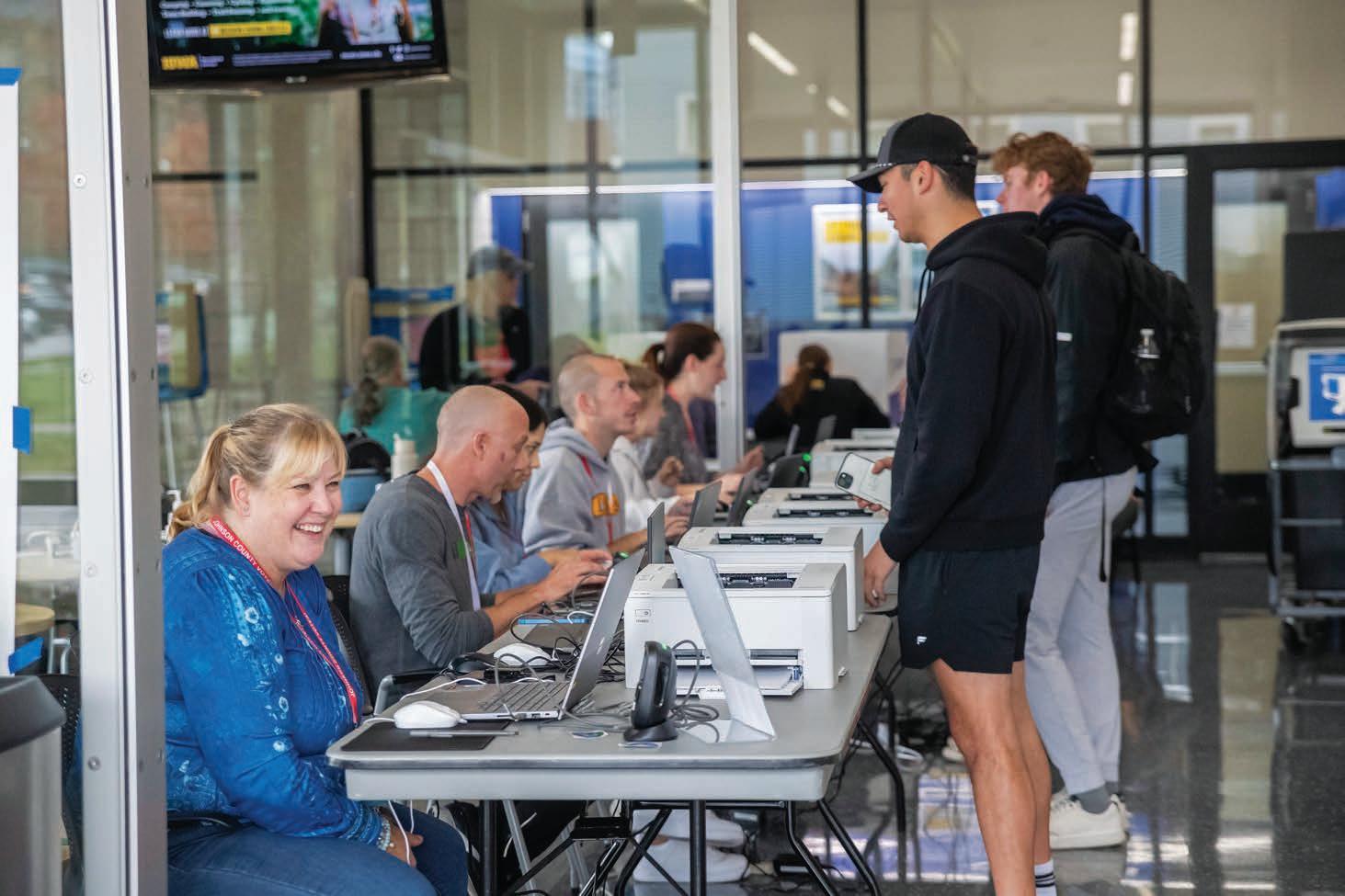
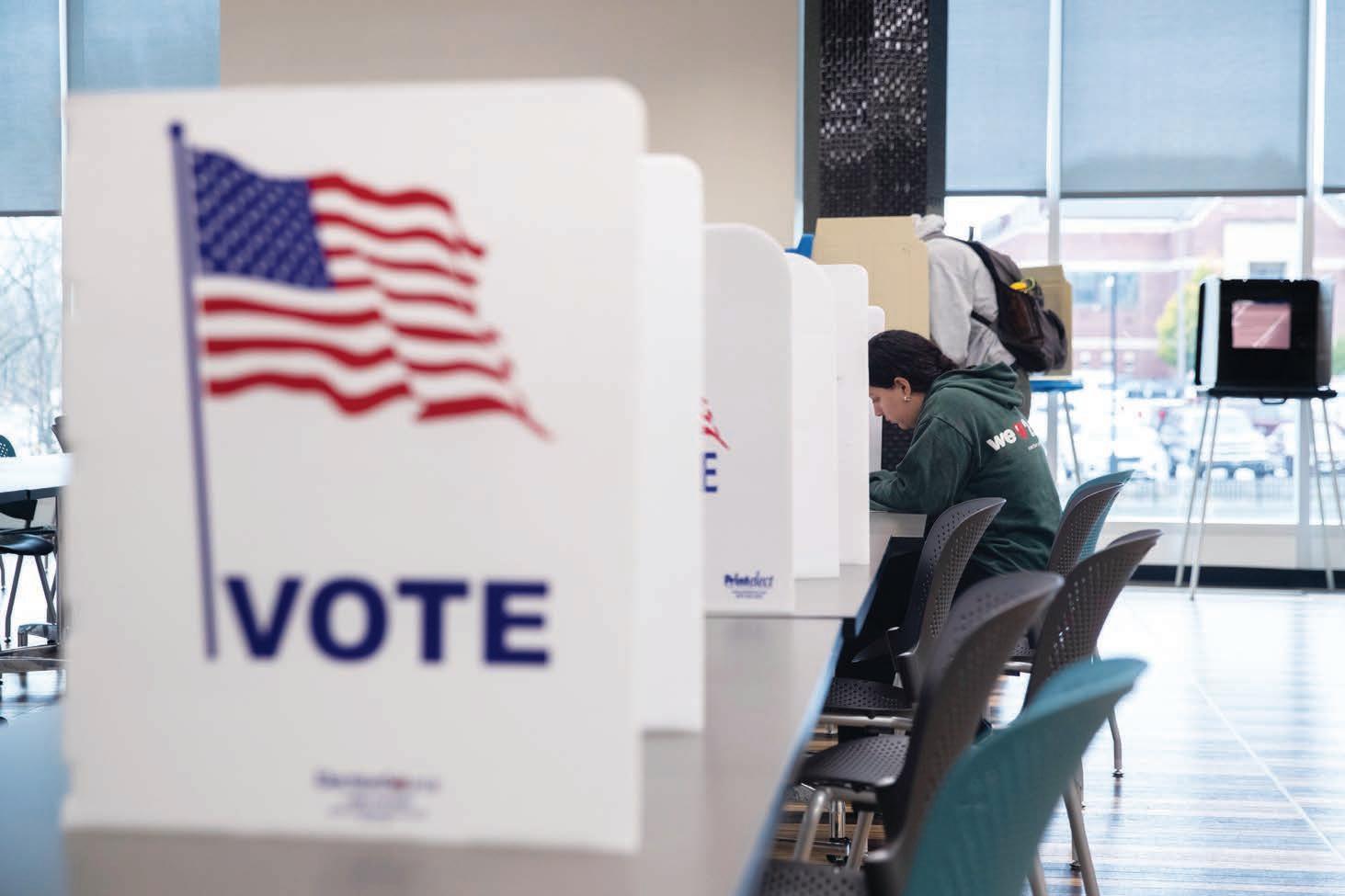
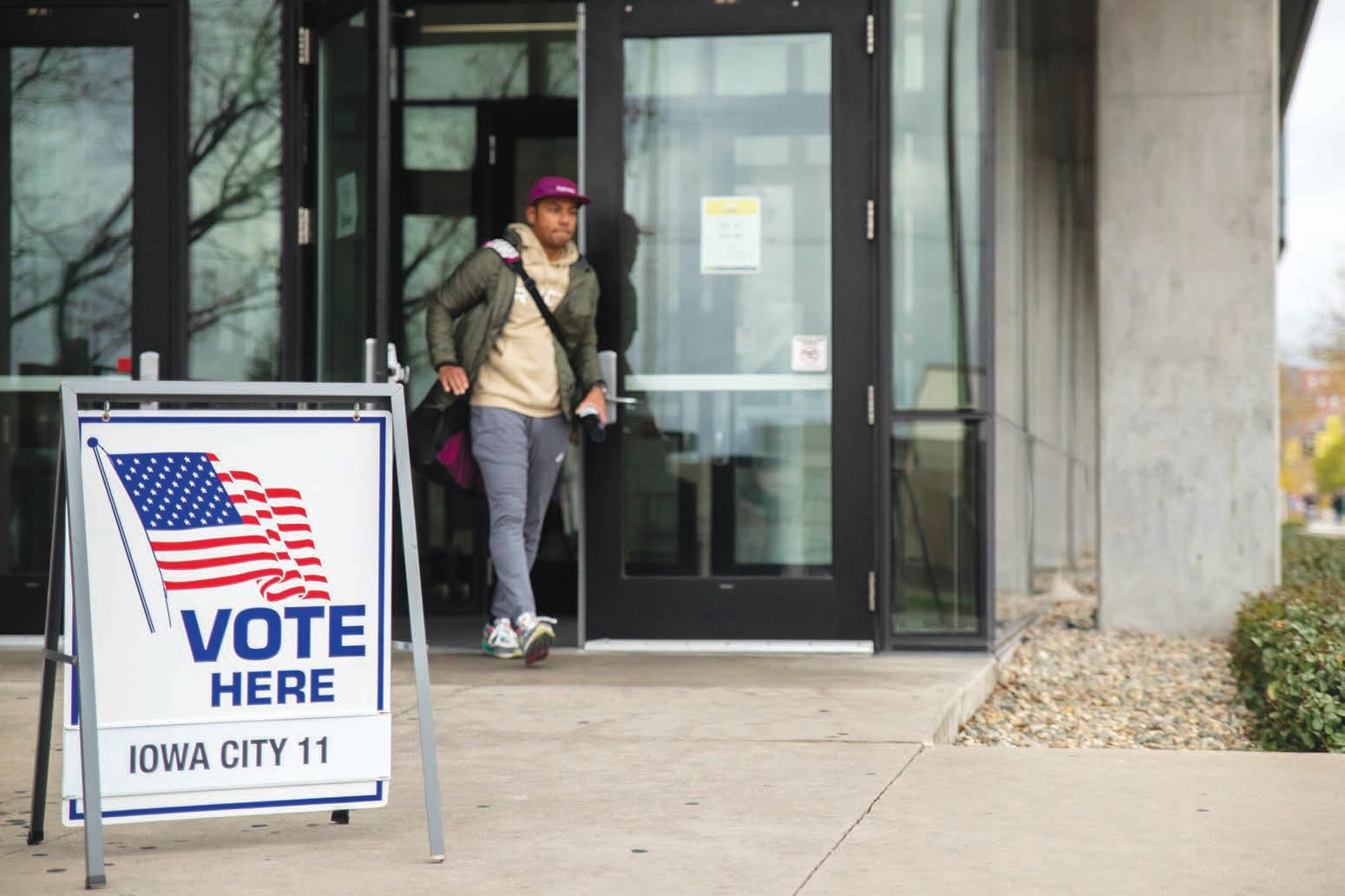

Iowa women’s soccer honors former players who paved the way for today’s success.
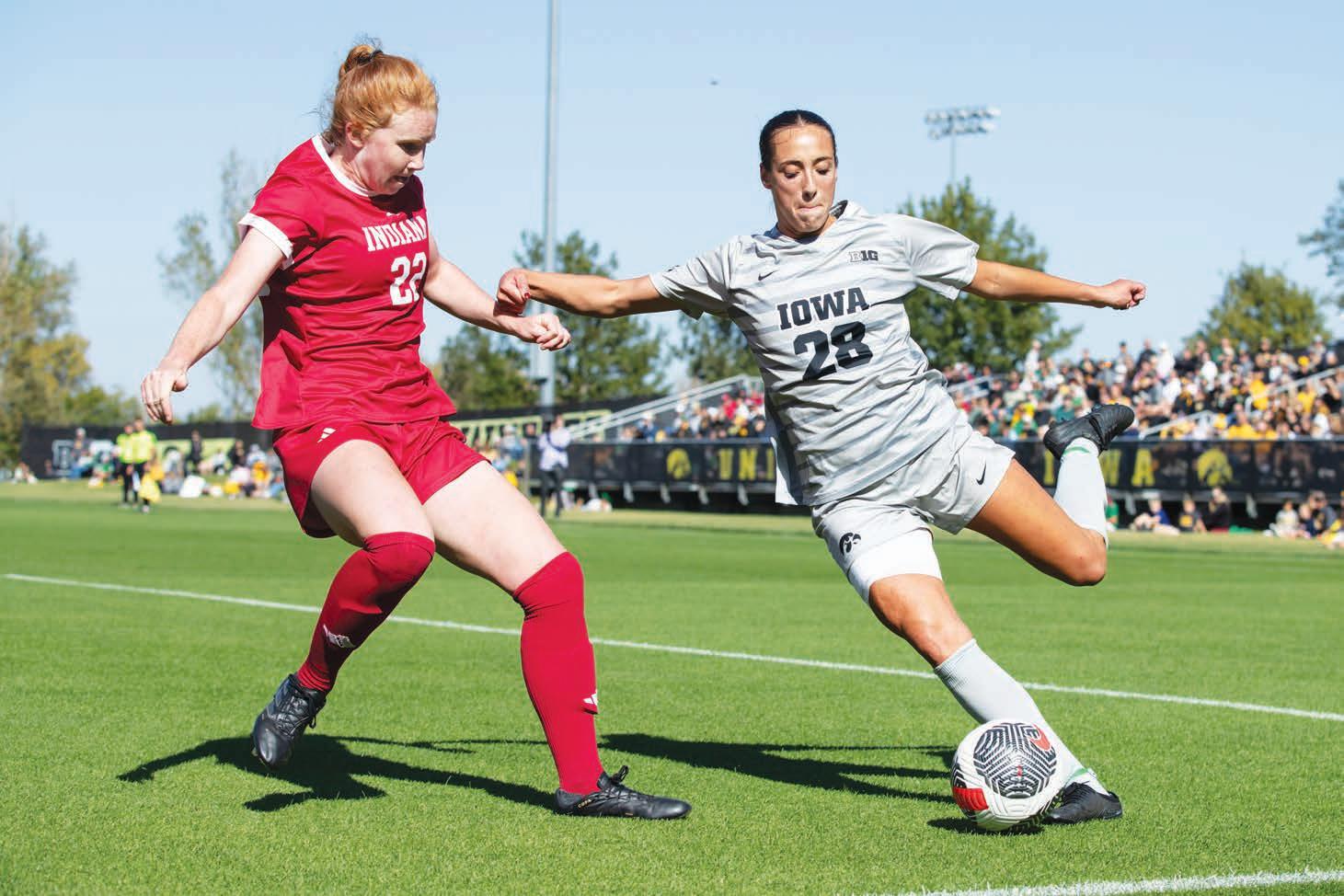
Iowa midfielder Kenzie Roling crosses the ball toward the net during an Iowa soccer match at the University of Iowa Soccer Complex
Trey Benson Sports Reporter sports@dailyiowan.com
Iowa women’s soccer has built a memorable legacy in recent years, highlighted by ranked wins and postseason hardware.
But it’s channeled the traditions of former teams to do so — and brought Iowa soccer to national attention as a result. Excellence, winning, growth, integrity, dis-
cipline, respect, grit, and family — all traits at the heart of the University of Iowa women’s soccer team finishing the regular season ranked No. 11 in the country.
And every single player from this team and back to members of the founding team almost three decades ago in 1997 has been constantly reminded of these pillars during her time wearing the Black and Gold on the pitch.
But, while Hawkeye soccer is ingrained in tradition, the state has historically lacked that
tradition in its levels below.
Recently, soccer has grown in popularity in rural Iowa, but according to the Iowa High School Athletic Association, soccer is only played in 174 high schools statewide, compared to 350 total schools competing in track and field during the same spring season.
The lack of greater opportunity for soccer at the high school level has made many soccer enthusiasts overlook the state of Iowa or believe the Hawkeyes cannot compete at a
high level collegiately with other states.
Upon a deeper look, though, this is not the case. With a record of 13-2-3 and a national ranking of No. 11, Iowa women’s soccer has proved to those with even the most pessimistic views that those sentiments against Iowa soccer are blatantly wrong. This begs the question: How did women’s
Former Iowa Hawkeye quarterback Spencer Petras, now at Utah State, stands out above the others.
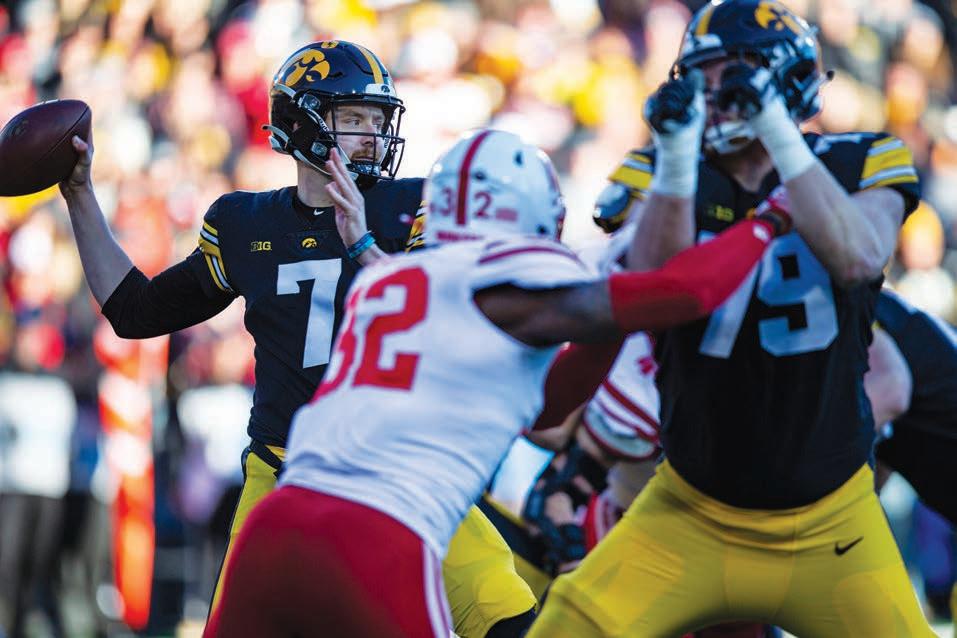
Colin Votzmeyer
That “wait your turn” mantra stands for development through the program, learning from the players before you, and growing into your own role.
But as the Iowa football offense collapsed in 2022, fell to the very bottom of the Football Bowl Subdivision in 2023, and claws its way back up now, a handful of bigger-name Hawkeyes have looked for opportunities now rather than later.
The biggest such name is Spencer Petras, who spent a year on the sidelines for the Hawkeyes in a coaching role before putting his name in the transfer portal. He landed at Utah State, earned the starting role quickly, and is perhaps having the best turnaround of any ex-Hawkeye. In fact, Petras is having his best season yet, completing 161 of his 245 passes for 1,825 yards, 13
touchdowns, and seven interceptions. His best game came in a 50-34 loss to UNLV on Oct. 11, throwing a whopping 41-of-59 for 461 yards and three touchdowns and three interceptions. Beyond Petras, though, the transition gets much harder. Take Deacon Hill, last year’s starting quarterback after Cade McNamara’s injury. After seriously struggling to ignite the Hawkeye offense, Hill transferred to Utah Tech and has seen very limited time.
His best game came on Sept. 7, throwing 14-of-28 for 188 yards, two touchdowns, and a pick. But the Trailblazers scored just 14 points in the game as they surrendered 72 to UNLV. And while former backup Hawkeye quarterback Joe Labas showed promise, transferring to Central Michigan and throwing for 342 yards and three touchdowns on 18-of-24 in a 66-10 debut win over Central Connecticut
Barnes serves as a mentor and inspiration for his players both on and off the court.
Jack Birmingham Sports Reporter sports@dailyiowan.com
Through the ups and downs, the Iowa volleyball team has found consistent leadership and support through third-year head coach Jim Barnes, whose career has a history of building humble programs into powerhouse squads.
Barnes has compiled a record of 473-390 during his 27-year tenure as a collegiate head coach, leading his teams to four postseason appearances and nine 20-win seasons.
“I’ve helped five programs who were not winners become winners,” Barnes said. “I would love to get this program to become a winner. To me, the best part of how to end this career is to turn Iowa into a winner.”
Barnes began his coaching career as an assistant for six years at McNeese State, his alma mater. His reputation as a coach only grew from 1996-01, where he was the head coach at Lamar, netting the Lady Cardinals two Southland Conference championships during his tenure.
Barnes then moved to Wyoming and brought the Cowgirls their first 20-win season in 11 years.
After spending two seasons in Laramie, Barnes returned to Texas in 2004 to coach the Baylor Bears, then a fledgling program.
Barnes quickly improved the program, leading it to two NCAA tournament appearances in 11 seasons, including a Sweet 16 run in 2009. He also produced Baylor’s first five All-Americans and became the winningest coach in program history with 181 triumphs.
Following his dismissal from Baylor in 2014, Barnes served as head coach at Tulane, leading the Green Wave to consecutive title game berths in the National Invitational Volleyball Championship.
Now, Barnes looks to turn around a struggling Iowa program that has historically been one of the Big Ten’s worst and has never played in an NCAA Tournament to date.
“It’s a very similar situation,” Barnes said. “They were at the bottom of the Big 12, and we built them all the way up to the Sweet 16. I’m certainly leaning a lot of that knowledge on what we’re doing here.”
Barnes has started slowly through his first two seasons at the helm, posting records of 10-21 in 2022 and 8-24 in 2023. Despite the uphill climb, Barnes maintains his goal of competing for Big Ten titles.
Football
Friday, Nov. 8
UCLA Pasadena, California
8 p.m.
Men’s Basketball
Monday, Nov. 4
Texas A&M Commerce
Iowa City, Iowa
7 p.m.
Women’s Basketball
Wednesday, Nov. 6
Northern Illinois Iowa City, Iowa
6:30 p.m.
Men’s Wrestling
Saturday, Nov. 9
Stanford Iowa City, Iowa
1 p.m.
Women’s Wrestling
Friday, Nov. 8 Life
Marietta, Georgia
6 p.m.
The Daily Iowan’s Assistant Sports Editor Brad Schultz takes a deeper look at Iowa’s Week 11 opponent in UCLA as the end of the season approaches.
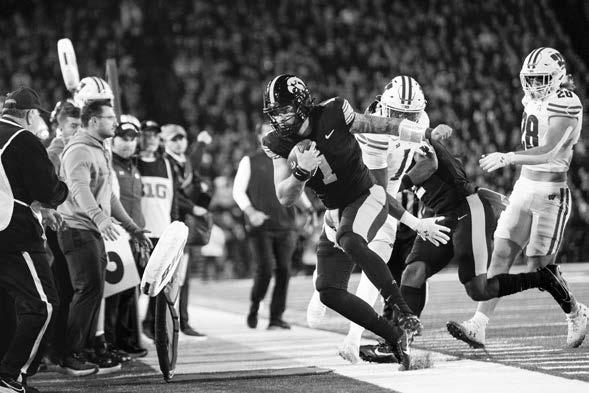
Brad Schultz Assistant Sports Editor brad.schultz@dailyiowan.com
Volleyball
6
Tennis
Week 1 of the 2024-25 NBA season is complete — with all three Hawkeyes in similar roles as last season.
Keegan Murray remains on the starting four for the Sacramento Kings despite the addition of All-Star forward DeMar DeRozan.
The Kings opened their season with a 117-115 home loss to the Minnesota Timberwolves on Thursday.
The forward began his third season with a doubledouble of 23 points and 11 rebounds along with two assists on 8-of-17 shooting on a team-high 43 minutes.
After suffering two losses to start the season, Sacramento took the 111-98 win over the Portland Trail Blazers for their first victory of the season. In 33 minutes, Murray had a subpar scoring night of six points on 2-of-9 shooting but collected eight rebounds and two assists to round out a solid outing.
Kris Murray averaged a little over 15 minutes through the first four games of the Portland Trail Blazers’ 1-3 start to the season.
Portland’s loss to the Kings, and the first matchup between the Murray twins this season, saw Kris log seven points and two rebounds on 2-of-6 shooting in a season-high 25 minutes thus far. Despite the Minnesota Timberwolves trading away All-Star center Karl-Anthony Towns in the offseason, center Luka Garza didn’t see any action through the team’s first three games. It was expected that Towns’ exit opened the door to an expanded role for Garza, but that has not been the case thus far. The Timberwolves have won two of their first three games to open the season and are likely to make a strong case for an NBA Championship run this season.
Following a 42-10 victory against rival Wisconsin, the Iowa football team hits the road for a Week 11 matchup against the UCLA Bruins, who enter the contest at 3-5 overall and 2-4 in Big Ten play.
The Bruins are one of four new expansion teams in the Big Ten this season, and it’s been a bit of a struggle for the program. Head coach Chip Kelly left in the offseason to become the offensive coordinator for Ohio State, and UCLA tapped running backs coach DeShaun Foster to succeed him.
Foster, a former second-team All-American back for UCLA, began his tenure on an embarrassing note with a bizarre opening statement at Big Ten Media Days in July and responded by barely beating Hawaii and getting blasted by 17 points in their next three games.
Despite the disappointing record, the Bruins have played much better over the last few weeks, battling a
top-five Penn State team in Happy Valley and securing an impressive road win at Rutgers two weeks ago.
UCLA continued the strong surge with a surprising 27-20 on the road at Nebraska, showing the rest of the Big Ten that they will be tough out the rest of the season.
This game will take place in primetime at 8 p.m. CT on Friday evening at the historic Rose Bowl Stadium in Pasadena, California. Iowa has not won at the venue since claiming a 38-12 victory at the 1959 Rose Bowl Game, losing their four previous trips to the stadium, all of which were Rose Bowl games.
To fully digest this matchup, let’s take a deeper look at the Bruins.
The Bruins are one of the worst offenses in the Big Ten, averaging 17.4 points per game, ranking 17th in the conference. Despite their struggles, UCLA carved up a solid Nebraska defense in Lincoln last weekend, totaling 360 yards.
Eric Bieniemy enters his first
season as the offensive coordinator after serving in the same role for the Kansas City Chiefs and Washington Commanders. Bieniemy has long been a potential NFL head coaching candidate but hasn’t received the long-awaited call yet.
Now, he looks to revitalize the UCLA program, and the results have finally started to produce.
Leading the Bruin offensive attack is quarterback Ethan Garbers, who has tossed 10 touchdowns and nine interceptions on 1,703 passing yards this season.
While the turnovers have been a problem this season, Garbers has improved each game, throwing four touchdowns against Rutgers and two against Nebraska last week.
The fourth-year is also a capable rusher, tallying a 49-yard score against Rutgers and sprinting for another 56 yards against Nebraska.
Despite his inconsistent play, Garbers’ veteran leadership and experience will keep this Bruin squad in games it has no business being in. He is the primary name for Phil Parker and the Hawkeye defense to look out for in this one.
A solid run game is usually a good security blanket for a quarterback, but UCLA has struggled to run the football this year, totaling only 591 yards and three touchdowns this year. That number ranks dead last in the conference, nearly 400 yards behind Minnesota.
The Bruins also post a respectable pass-catching unit with four players recording over 200 receiving yards this season. Tight end Moliki Matavao leads this group with 303 yards, averaging 12.6 yards per catch. Logan Loya leads the way with three touchdowns.
The Bruins have been an average defensive unit in 2024, allowing 27.9 points per game, which ranks 92nd in the country.
Jake Olson Sports Reporter sports@dailyiowan.com
The Daily Iowan: What is the toughest conditioning you have experienced at Iowa?
Rachel Herbine: Probably our fitness tests.
What do those involve?
It is 16 lengths down and back. There are certain times we have to get, and it’s really tough. It’s not horrible, but it is doable. That is probably the hardest I have experienced.
What is the coldest game you have competed in?
Last year in the NCAA Sweet 16 when we played Louisville. It was extremely cold. I think it was like 30 degrees, and I only had an Under Armour on.
Would you rather play in cold or hot weather? Hot, 100 percent. I like to feel my hands when I play.
Ikaika Malloe enters his first season as the defensive coordinator after previously serving as the defensive line and outside linebackers coach for two seasons. Malloe also has previous experience as the defensive coordinator at Washington State for two seasons, providing plenty of expertise for Foster and company.
Despite some struggles early on in the season, the Bruins have appeared to hit their stride over the last few contests, yielding just 20 points against Nebraska last weekend.
In addition to the strong performance against the Huskers, the UCLA defense also recorded a crucial pick-six off quarterback Dylan Raiola in the third quarter, a score that proved to be the difference in the victory.
Second-year placekicker
Mateen Bhaghani has performed his job well for the Bruins, knocking in 12 of his 14 field goal attempts and all 14 of his extra point tries. His season-long of 54 yards came against Oregon on Sept. 28.
Second-year punter Brody Richter has booted 28 punts with an average of 43.4 yards per attempt.
The Hawkeyes are the better team on paper here, but the Bruins will be determined to earn their first victory at the Rose Bowl this season. The only problem for them is that Iowa will likely bring at least 20,000 of their own fans to Pasadena for this one. It’s hard to forecast the result of this one, but expect the Rose Bowl to feel like Kinnick Stadium on Friday evening.
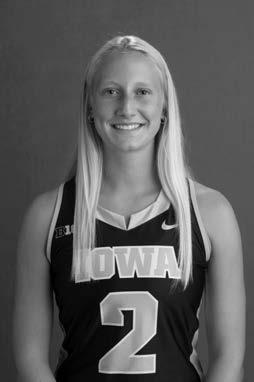
Are you more of a dog or cat person? Cat person, 100 percent. I have always grown up having cats. I did have two dogs when I was little, but I never got to grow close to them. I think cats are less scary, and they don’t smell bad.
What is one movie you could watch for the rest of your life?
“The Notebook.” I love that movie. Even if it is like two and a half hours, I really like it. It makes me cry. I cry every time I watch it, even though I know what’s going to happen.
What show could you watch for the rest
I’m really into “Designated Survivor” right now on Netflix. It’s like a politics show, and
Is your mom or dad better at cooking? Only really my mom cooks, so I would have to say to her. But my dad does like breakfast, and he’s pretty good at that. But my mom usually does dinner.
What is your favorite season of the year and why?
I like summer just because my birthday is in it. It’s warm, and I like the beach with no school.
What is your least favorite season? Winter. It’s cold, but I do like Christmas. That’s one good thing about it, but I just don’t like the cold.

“I do what I’ve got to do to help us be the best we can.”
Iowa starting quarterback Brendan Sullivan
Hawkeye women’s basketball players named to the Naismith Trophy Player of the Year Watch. Lucy Olsen and Hannah Stuelke
Despite a pair of disappointing losses to Iowa State and Michigan State, Kirk Ferentz and the Hawkeyes still have an opportunity to earn nine wins in 2024. This was supposed to be a very successful season for Iowa, as many college football analysts had the Hawkeyes as a dark horse candidate to make the new 12-team College Football Playoff.
Much of the preseason hype was earned because of a beneficial schedule that included only one preseason top 25 team — Ohio State. While the lofty expectations will not come to fruition, this doesn’t diminish the fact that this can still be a successful year for Iowa.
The remaining three games for Iowa are against opponents who are near the bottom of the Big Ten standings: UCLA, Maryland, and Nebraska. Maryland and UCLA have a combined six wins between them, while Nebraska has struggled after starting the year 4-1.
Though UCLA and Maryland will be on the road, ESPN Analyt ics favors the Hawkeyes in each matchup.
Another key factor in Iowa’s future success is the implemen tation of quarterback Brendan Sullivan.

Hawkeye fans had only seen Sullivan involved in red zone packages near the goal line for most of the season, but everything changed against Northwestern on Oct. 26.
Starting quarterback Cade McNamara walked off the field after suffering an injury in the second quarter, forcing Sullivan into the game behind a standing ovation from the Black and Gold faithful.
The Northwestern transfer gave the offense instant life after Iowa was down 7-5, manifesting four touchdown drives and even running one in himself for his third rushing touchdown of the season. This burst of offense adds another dimension to the Hawkeyes’ already powerful rushing attack led by third-year star Kaleb Johnson. Add in a softer remaining schedule, and I believe the Hawkeyes have a strong chance of winning out the rest of the regular season and eclipsing the nine-win mark this year.
While Jake certainly makes a great case for Iowa winning out, I just can’t see that happening this year. The Hawkeyes have been wildly inconsistent on both sides of the ball this season, evidenced by terrible second-half performances in all three of their losses this year, especially against Michigan State on Oct. 19. Replacing Cade McNamara is a plus for this offense, but even though Brendan Sullivan presents a new look for Iowa, I need to see more of a passing game from him to sell me.
Remember when fans were calling for backup Alex Padilla to replace Spencer Petras during the 2021 season? The Hawkeyes eventually made the move, and Padilla failed to bring any magic to Iowa’s struggling offense. Now, I’m not saying that Sullivan is as bad as Padilla was, but there’s no guarantee that he will be the answer at QB.
The second reason why I don’t think the Hawks can win out is the fact they have to play on the road at UCLA. Though the Bruins are one of the worst teams in the Big Ten, it has been a massive struggle for teams traveling to the West Coast this year. Jumping two time zones for any reason is difficult, especially for a football game. Making matters worse, the UCLA game takes place on a Friday night, forcing Iowa to rush its preparation for this matchup. It’s worth mentioning that Indiana and Minnesota both came out victorious in the Rose Bowl when they visited earlier this year, but it will be a challenging game for the Hawkeyes. In addition to the tough road contests at UCLA and Maryland, Iowa will have to wrestle with heated rival Nebraska at Kinnick Stadium to end the regular season. The Hawkeyes have won eight of the last nine matchups in this series, and the Cornhuskers will be desperate to seek revenge after a tough 13-10 loss in 2023. It’s certainly not impossible, but these last three games are harder than most fans think. Iowa could easily slip up along the way. I hope I’m wrong, though.
soccer become a growing, nationally recognized powerhouse in the first place?
The obvious answer would be that Iowa has recruited better athletes than before, especially taking advantage of the newlook NCAA today in snagging the likes of Kelli McGroarty, Elle Otto, and Maya Hansen from the transfer portal. But there is much more to a team than recruiting.
Much like Rome, the UI women’s soccer team was not built in a day. In fact, it was built over the course of those 27 years since its inaugural season in 1997.
During the inaugural season, as women’s soccer was growing on the international scene with the rise of Mia Hamm and FIFA Women’s World Cups, Iowa went just 8-11 overall and 2-7 in conference play.
Offensively, a trio of Hawkeyes led the team: Beth Oldenburg, Kate Walse, and Jenna Sorenson. The three accounted for 62 percent of the goals on the season. Defensively, the 1997 Hawkeyes were led by goalkeeper Gabe Mauren, who recorded a total of 101 saves and allowed 37 goals on the season.
While the 1997 team was far from perfect, for the first-ever season of play, the team laid a solid foundation for future Hawkeyes by truly embracing the “blue-collar” work ethic — outworking their opponents with physical play.
This “blue-collar” mindset is most definitely embodied on today’s team, best explained by current forward Kenzie Roling.
“Finding people that always trust the process and that want to get better really sold me as well,” Roling said. “Seeing that at work before, and just the kind and welcoming environment, really made Iowa stand out.”
Following the 1997 season, Hawkeye soccer experienced both high and low points, with three 10-plus win seasons from 1999-03. However, Iowa was unable to keep the early momentum into the mid-to-late 2000s, forcing it to reshape that “blue-collar” mindset in adaptation to a new era of collegiate athletics.
And from 2011-14, Iowa soccer strung multiple successful seasons, going 41-17-7 during that time frame.
Team morale was extremely high for Iowa soccer for the first time since the early 2000s. And amid the rush of winning, needing a final piece to make the turn toward the finish line, the program then took a chance on a head coach who had won three NCAA Division II National Championships before.
The UI hired Dave DiIanni in 2014 after 11 successful seasons as head coach of Grand Valley State.
In his 11th season as head coach today, DiIanni has compiled a record of 115-76-27 and led the team to three NCAA tournament appearances alongside two Big Ten championships. Still, DiIanni’s approach to recruiting has been at the forefront of his success, finding players in Iowa and out who truly embody, “excellence, winning, growth, integrity, discipline, respect, grit, and family.”
Statistically, Iowa is much more sound defensively than
State, his season is now over.
Labas suffered an arm injury, underwent surgery, and will miss the rest of his junior season.
Evidently, it has not all been bright for the Iowa transfers, down to mid- and lowmajor schools that are each experiencing down seasons. Utah State is 2-6, Utah Tech is 1-9, and Central Michigan is 3-5.
Out from under center, former starting Hawkeye receivers are having better luck.
Diante Vines made the jump to Old Dominion and is a reliable receiver for the Monarchs, as he’s averaging just under 10 yards per catch. His best game came in a 45-37 loss to Coastal Carolina — four

it has been in past seasons, only allowing 10 goals this year compared to 35 allowed in 1997.
While the work ethic and physicality remain intact, there is a glaring difference in Iowa’s offense.
Offensively, the Hawkeyes have a much wider range of scorers on their team compared to previous teams with over 14 different players scoring this season, making it much harder for opponents to slow Iowa down.
In the past four seasons, Iowa has won two Big Ten championships, however, the team lost in it’s first round of play this year.
And with the recent success and long journey leading up to it, it is important to remember the roots of the program.
Current Hawkeye soccer midfielder Rielee Fetty is extremely grateful for the groundwork paved by former players.
“Meeting all the alumni, they were resilient, and they had nothing to build the program — carry on to this year, we are united for the love of the game,” Fetty said. “My freshman year, we weren’t expected to make the tournament at 0-8. Now we had that mentality of, ‘Why not us?’ Never really underestimating the power of resilience is huge.”
Soccer at the UI has not only grown from a competitive
receptions, 73 yards, and a touchdown.
And after Jacob Bostick’s career at Iowa was riddled by injuries, he made the biggest leap of any former Hawkeye offensive player as he transferred to the top 20 Texas A&M Aggies. While his playing time has been very limited, Bostick arguably has the most potential to make a serious impact on the highest level.
That’s not to mention the departures of running back Leshon Williams and wide receiver Kaleb Brown in the middle of this season, both utilized very little with the emergence of star running back Kaleb Johnson.
“Not to be callous, but if a player isn’t playing, it’s not like you lose anything that way,” Iowa head coach Kirk Ferentz said. “If somebody hasn’t really been playing,
standpoint but for its audience as well. For reference, the highest attendance during the 1997 season was 907, where Iowa had a dismal performance against the Minnesota Gophers, losing by a score of 6-0.
Now, Iowa soccer is drawing in fans from near and far, recording an attendance of 1,893 against Washington on Oct. 17. If the atmosphere of a couple thousand Hawkeye fans isn’t enticing enough for future recruits, then maybe some insight on what it truly means to be a member of the Hawkeye soccer culture from Fetty will help.
“Come to Iowa,” Fetty said, laughing. “It’s not the same everywhere else [compared to Iowa]. There is just something different about Iowa. We feel like we are always underestimated, trying to prove people around us.”
“I genuinely love going to practice,” she added. “And our coaches always joke and say, ‘Do you guys really like each other that much?’”
Just 27 years after its founding, Iowa soccer has transformed from a budding soccer school to a nationally recognized program, drawing recruits from across the country to get a chance to play in the historic Black and Gold kit — and shoot for gold while they do it.
it’s not like you’re losing a lot of contribution.”
But transferring out of the Iowa offense has produced success in the past. Charlie Jones left for Purdue, was drafted by the Bengals, and is now their special teams returner. Tyrone Tracy Jr. also left for Purdue and is now the starting running back for the New York Giants with the injury of Devin Singletary.
“The one trait you don’t hear a lot about is intelligence,” Giants running backs coach Joel Thomas told the New York Post of Tracy. “He’s a smart football player. He’s grasped onto the things we’re asking him to do and develop.”
Iowa is “Tight End University,” yes, with the recent NFL Draft selections of Erick All and Sam LaPorta. But beyond that posi-
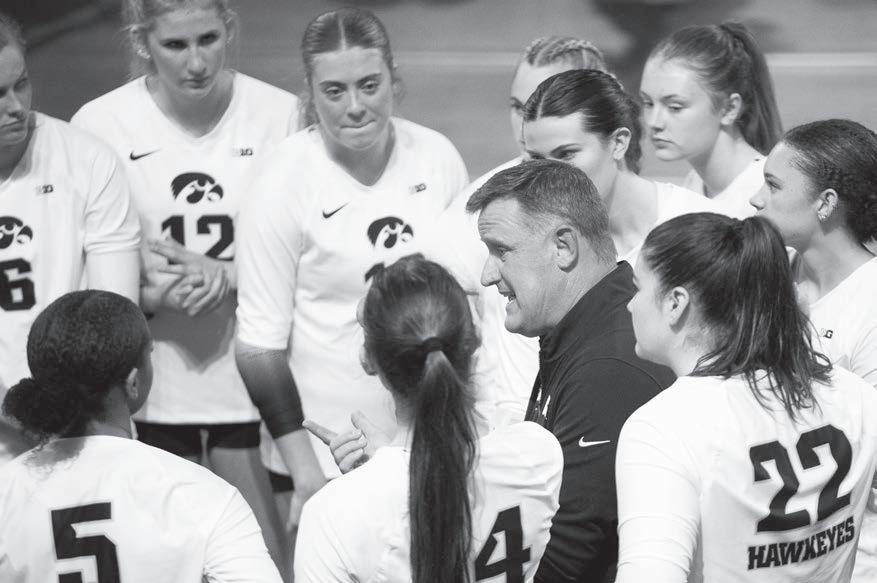
“We want to make this team a top 25 program every season; start competing for Big Ten titles,” Barnes said. “If you’re winning this league, you’re going to be a national champion. There’s so much potential and so [many] things to achieve here that we’re going to work hard to make it happen.”
Barnes’ job as a coach extends beyond stats and numbers from games; it also means making a lasting impact on his players. One of those players is fifth-year middle hitter Gracie Gibson, a transfer from Lafayette, who credits Barnes as a positive influence and role model.
“I think he’s one of the most positive coaches I’ve ever had,” Gibson said. “As a player, you definitely always feel like he believes in you, which I think is really great and helpful on the court. I feel like we’re allowed to make mistakes and work through things. You always know that he knows that you can get the job done.” Gibson, who played and started in all 24 matches for Lafayette last season, praises Barnes for encouraging team bonding.
“In preseason, we did a lot of team activities together to get to know each other, which I feel like translated well on the court right off the bat,” Gibson said.
“He really encourages us to be around each other a lot off the court, which helps our chemistry on the court as well.”
Second-year Olivia Lombardi, who redshirted her first year and is now in her first active season, believes that Barnes has positively impacted Iowa’s performance.
“He’s just overall a great person,” Lombardi said. “I feel like you don’t find that a lot in coaches. He’s very supportive outside and on the court, a very positive person, always looking for the best in all of us. I think that’s helped us do a little bit better this year.”
Lombardi appreciates that while the team is not perfect, nobody is, and Barnes still believes in taking them to a high level.
“He knows what we’re capable of and the potential we have, so he will always make sure that we’re not doing any less than that,” Lombardi said. “But he’s also a great encourager. He does a great job of reiterating that we’re not perfect, but with hard work and determination, we’ll get there eventually.”
tion, the Hawkeyes have not produced any offensive professional prospects.
The last draft pick at wide receiver was Ihmir Smith-Marsette in the fifth round in 2021. The last running back was Shonn Greene in the third round in 2009. And the last quarterback was Nate Stanley in the seventh round in 2020.
Only Greene has had an NFL career that stands out, and even then, it only lasted five years. Stanley never played in a game, and Smith-Marsette is on his fifth team in four years.
The Hawkeye staff will need to develop its offense to bring recruits in, keep them around, and turn them into professional football players — the dream of every recruit in the beginning. Maybe it can take a page out of its defense’s book.






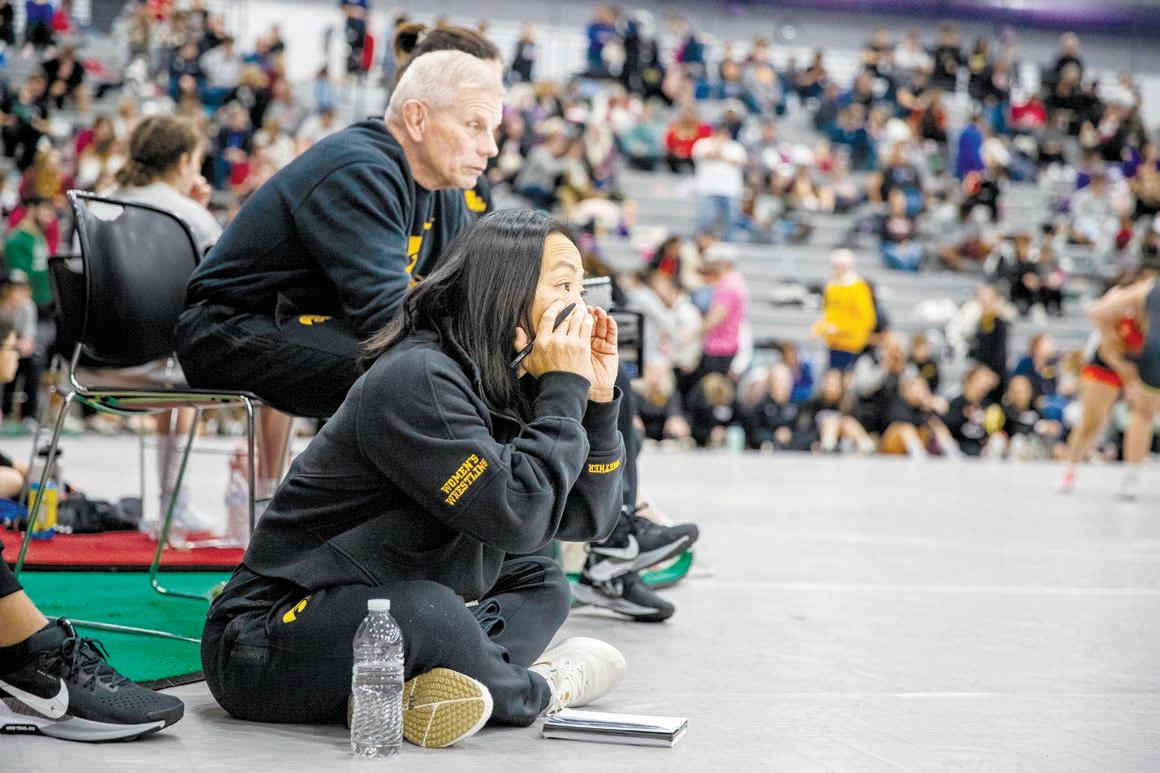
The No. 2 Iowa women’s wrestling team competed in the Luther Hill Open Titles at the Blake Field House in Indianola, Iowa, on Saturday, Nov. 2. Iowa finished the tournament with an overall record of 5817 and six winners.
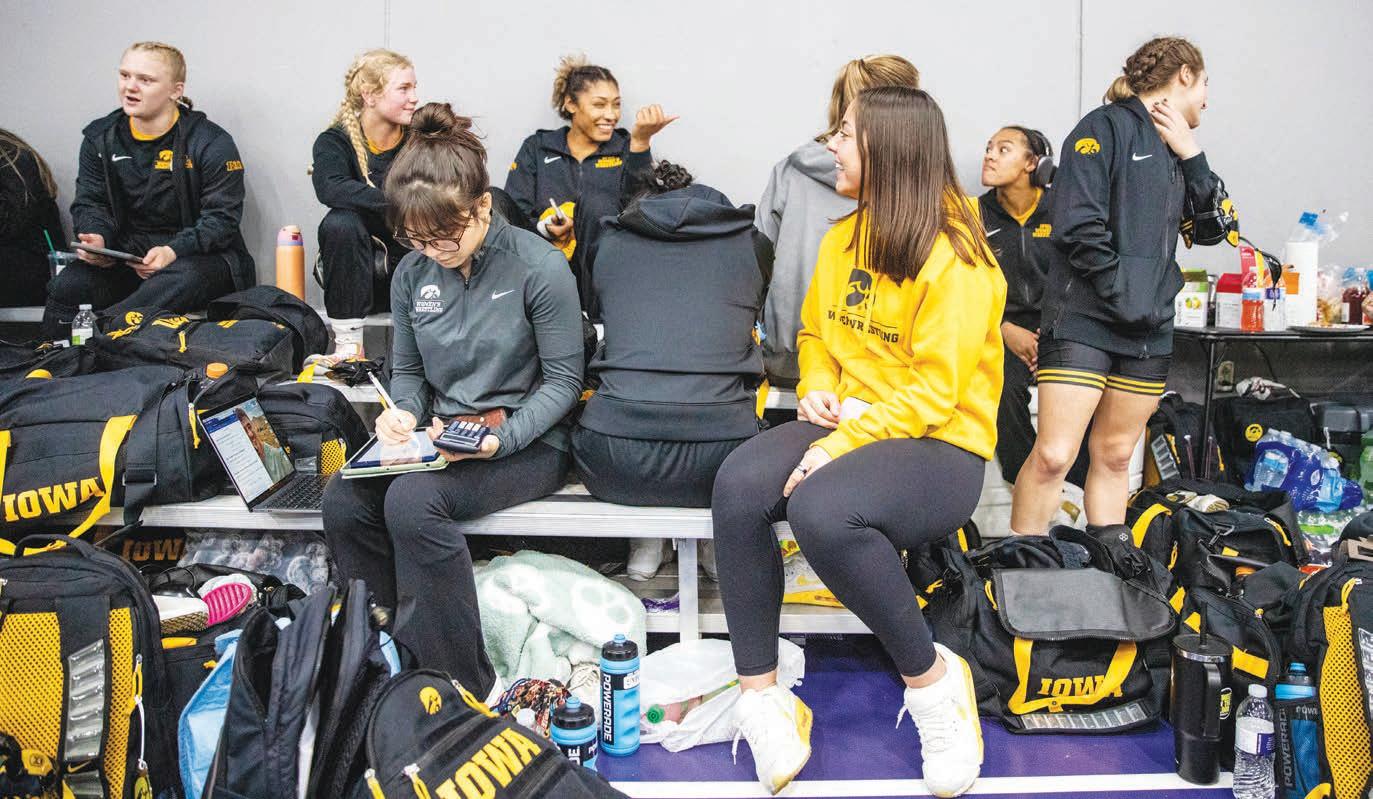
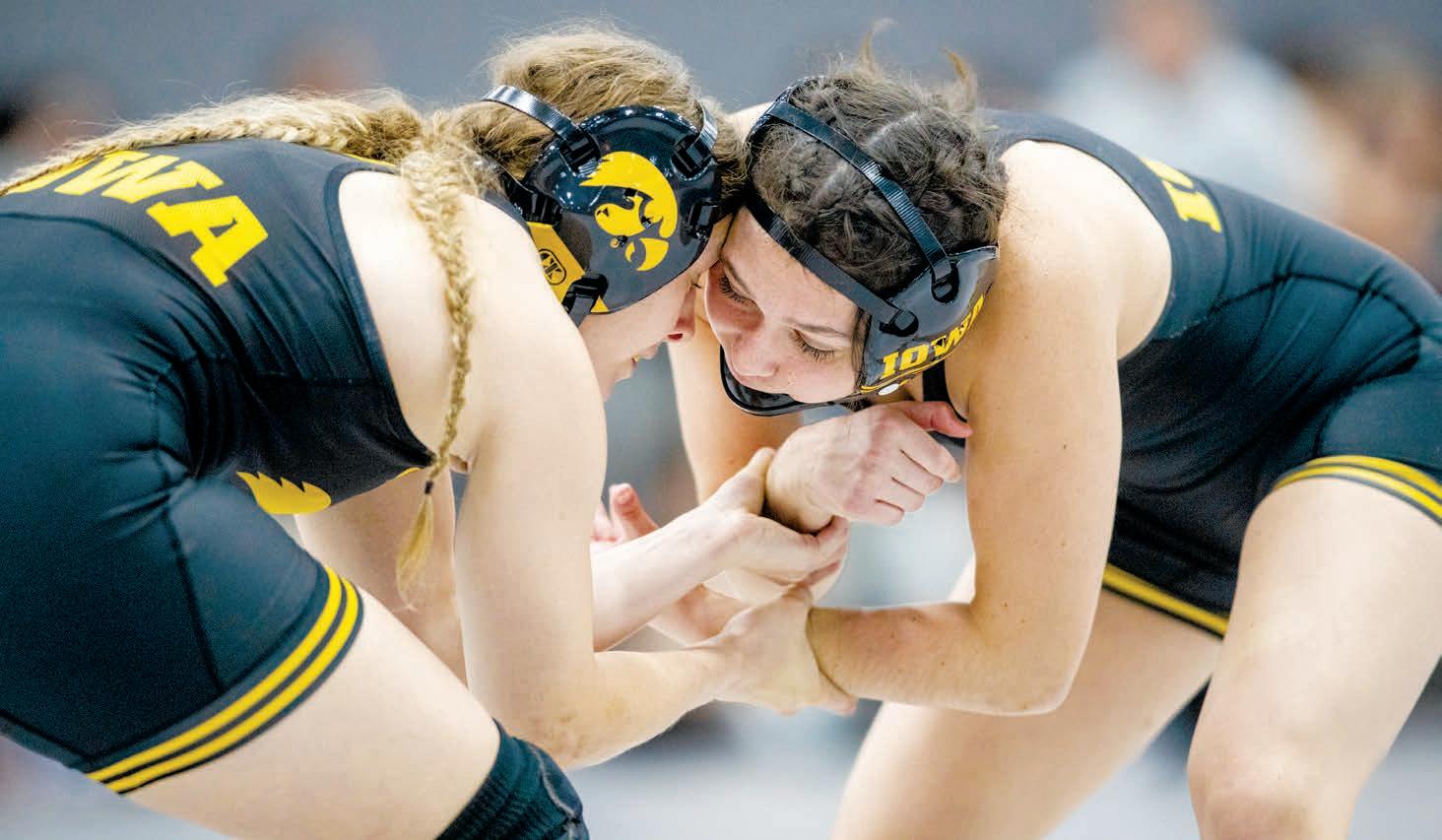

Within the past few years, true crime media has skyrocketed in popularity with new documentaries premiering on various streaming services every few months.




ASK THE AUTHOR | GINA WELCH
The author, screenwriter, and producer discussed transitioning from creative writing to showrunning the “Clipped.”
Stella Shipman Managing Editor
stella.shipman@dailyiowan.com
Gina Welch is a screenwriter, producer, and author who graduated from Yale University in 2001. She currently teaches English at George Washington University. She is a producer of “Castle Rock,” “Feud,” and “The Terror,” and she was the showrunner of the sports docudrama miniseries “Clipped.” In 2010, she wrote her nonfiction book, “In the Land of Believers: An Outsider’s Extraordinary Journey into the Heart of the Evangelical Church.”
From Oct. 21 to 25, she was a guest lecturer for the University of Iowa’s screening-based course, Iowa Writers’ Room: The Big Binge, during which she screened and analyzed “Clipped.”
The Daily Iowan: As a previous English and creative writing major, what was the process like of translating your creative writing skills to screenwriting?
Welch: I did an MFA in creative writing, and my concentration was fiction. Then I wrote a nonfiction book. During that period working in prose, I was learning how to write sentences and to think deeply about a subject and find something to say about it from my point of view.
When I moved to television, I had to learn a whole new form. You’re working with images in addition to working with text. And generally, you’re working toward a point where you may not even need text to communicate an emotion or an idea. I think the foundation that I had as a prose writer in terms of understanding how to work with language served me [in] the transition.
How was the process of taking what you know about fiction and applying it to nonfiction?
Fiction contains multitudes in terms of genre, but the nonfiction that I read and admire has a novelist’s approach to character. I remember loving and admiring “Random Family” by Adrian Nicole LeBlanc. That book cracked open my understanding of American life through the exploration of characters. That’s how I approach television; it’s always through character. It’s never through plot.
I’m such a fiend for dialogue. That’s kind of my ability. Where I have deficits in story and structure, I have strengths
In the UI’s Big Binge course, you are lecturing students on “Clipped.”
What was your favorite moment of participating in the production of “Clipped”?
Writing and shooting the scene in which the players are deciding whether or not to boycott in episode three. That was my favorite moment in the writers’ room, my favorite moment in production, and one of my favorite scenes in the show. It’s a scene that should not work. It’s too long. It is unusually long for a television show. It’s about seven minutes, and it doesn’t have a discernible shape. It’s not a pro-con debate. And it is much heavier than a lot of the other material in the show, and yet I think you can’t take your eyes away from it. It represents all of these different points of view on the team about whether or not the Clippers have a responsibility to boycott or whether or not it shouldn’t be their job at all to have a response. Nobody’s right.
When you are on a set, how do you make sure that what is on the page translates to what is seen in the images, and how do you maintain the integrity of that process?
It requires this sort of dual nature. You have to be solid in knowing what the show needs to accomplish, thematically and tonally. You have to defend who you know the characters to be. You have to make sure everything is cohesive according to a vision. And you also have to be incredibly porous and fluid to serendipity about what’s happening and what’s discovered on set.
I mean, if you’re there only to defend what you’ve already written in the script, you’re going to miss a lot, and you’re also going to be rigid when you find something that’s not working, rather than thinking in a kind of improvisational manner: “This isn’t working. What else can we try right now? We have two minutes to finish the scene. What else can we try?” You have to pay attention to all of it, and it’s impossible work for one person. Your partners, fellow producers, your director, and hopefully your writers are with you on set. Everybody is alive to whether or not you’re getting the best footage that you need to edit.
What is your biggest piece of advice for rising screenwriters?
I’m trying to come up with a way of saying something that sounds so unsexy no young writer wants to hear, which is that it requires a phenomenal amount of persistence through failure. Almost
How to stay comfy and stylish this upcoming season.
Isabella Nekvinda Arts Reporter arts@dailyiowan.com
If you are anything like me and have only come across miniskirts and high heels on Pinterest for fall inspiration, this is for you. This list of outfits includes clothes that are not only comfortable for the cooler weather but are actually wearable to classes while remaining stylish this season.
Baggy Jeans
Baggy jeans will be your best friend this fall, so invest in a few good pairs. The Pacsun eco jeans are great and very popular. You can also find a good baggy jean at Abercrombie or Madewell. The power of a good pair of jeans is often underestimated. It can make or break an outfit. The styles of jeans come and go from skinny jeans to jeggings to boyfriend jeans. Jeans are always shifting with the times, and we are in a baggy jeans era right now.
The ‘Rory Gilmore’ Sweater
A good sweater for this fall will never steer you wrong. Pair a pullover or button-up with a pair of jeans or a black or matching skirt. Wear rider boots or sneakers, and you’re done. Chunky wool sweaters are perfect for this fall and are currently donned as the “Rory Gilmore look.” A cozy cardigan will never steer you wrong either because it can be paired with skirts or jeans and will look great.
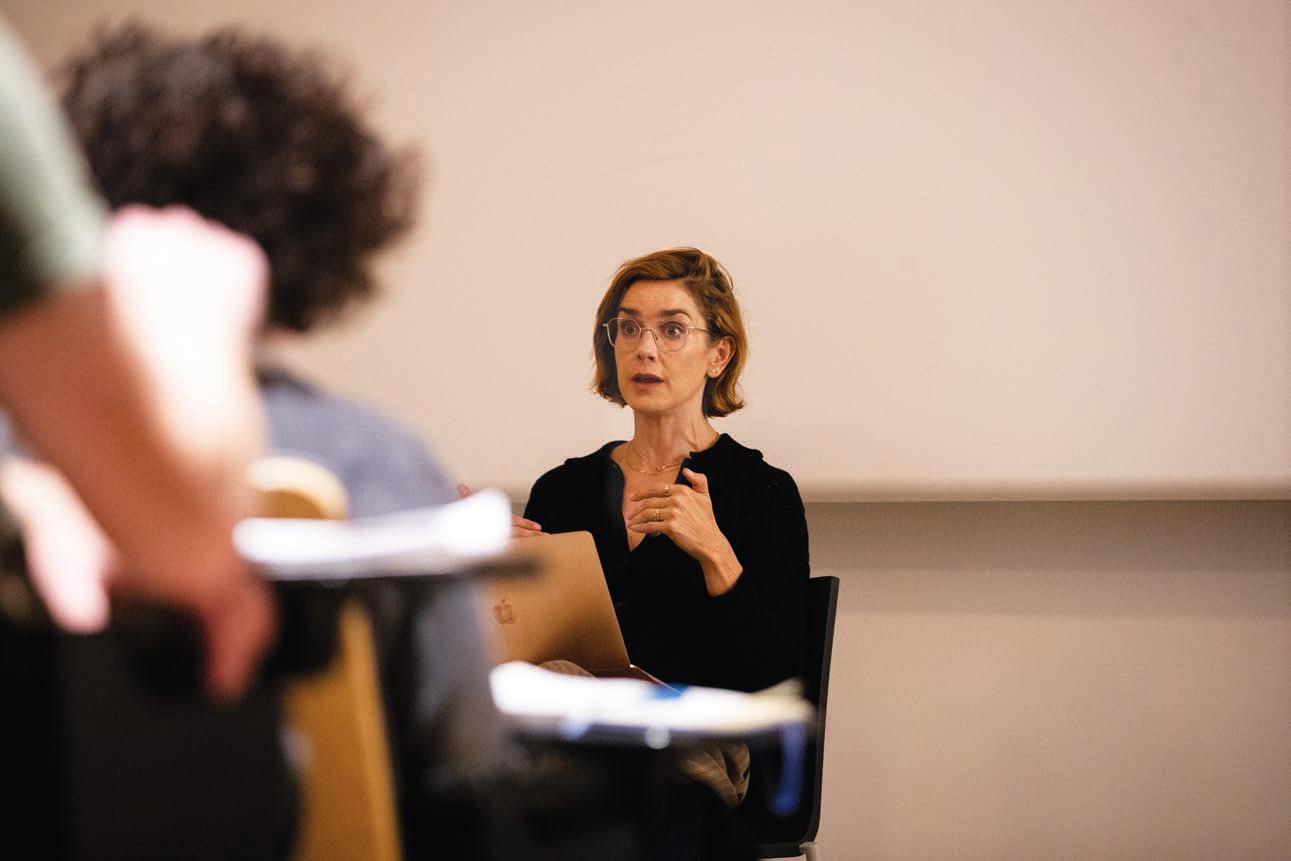
Leave your cardigan open with a basic tank under it or button it up. If you are wearing a pullover, you can layer a button-up underneath. There are many routes you can go down to jazz up or jazz down your fall outfit.
Suede jacket
Suede is perfect for fall, and a good light or deep suede jacket over a sweater or T-shirt looks amazing. Pair with your jeans and sweater combo and you will look right out of a Nancy Myers movie. You can find these at a thrift store in the jackets section, or I’ve had great luck raiding my dad’s closet.
Accented wool scarf
This versatile accessory goes with everything and elevates every outfit it goes with. You can pair this with anything: over a jacket, over a sweater, or over a coat.
Black skirt
A nice basic skirt is perfect for this transition period — or as we call them, “Iowa seasons” — where the weather is warm one day and cold the next. This is perfect for warmer fall days when you still want to dress for the seasons. Pair with a basic tank or a sweater and rider boots. A great skirt is the American Eagle black mini, I promise you will get your use out of it.


The true crime genre has taken the world by storm, inspiring shows and podcasts.
Kyrsten White Arts Reporter arts@dailyiowan.com
Riley Dunn Digital Editor riley.dunn@dailyiowan.com
The eight-foot Black Angel statue imposes its shroud over the Oakland Cemetery. A staple of Iowa City folklore, The Black Angel’s history has been twisted over time to spawn rumors and myths.
This distortion is quite similar to how true cases of murder and tragedy become kings on Netflix’s streaming charts.
“I think a lot of true crime can be like that, sort of an urban legend that runs wild. There’s this question about how much truth are we stretching or exaggerating,” University of Iowa graduate and author Rebecca McKanna said.
McKanna formed her opinions on the true crime genre while writing her first book, “Don’t Forget the Girl.”
While the book examines loved ones who are left behind in true crime narratives, she used it as a chance to critique the culture surrounding
these stories.
As she dove deeper into the genre, she noticed a significant number of lines being crossed. In recent years, TV has become the destination to adapt cases, the most notable being Netflix’s “Monster” series.

The first season explored Jeffrey Dahmer to much controversy, as the families of Dahmer’s victims were not informed of the show’s release. They only learned when they saw several scenes depicting the trial, where many saw interpretations of themselves on screen.
McKanna refused to watch the first season, as she had seen the victims’ families come out against it. But with less backlash, she decided to try the second season, and she thought there were still moments where ethics were not upheld.
“I think that probably any kind of nonfiction or docuseries is going to have these questions of perspective and questions about whose truth, whose viewpoint are we taking,” McKanna said.
While many shows and movies are made without the family’s consent, McKanna brought up one that did have permission. “Family Secrets: The Disappearance of Alissa Turney” investigates Alissa Turney, who went missing in 2001. It follows her younger sister Sarah as she gives more insight into their past and her suspicions that her father murdered Alissa.
This series proves that there are ways to present true crime cases in the media without exacerbating victims’ trauma.
The description of McKanna’s book reads, “We never remember the dead girls. We never forget the killers.” This can be seen in many documentaries, especially the ones Netflix continues to release that are the tapes of serial killers themselves.
In 2019, Netflix began its collection “Conversations with a Killer.” Only three
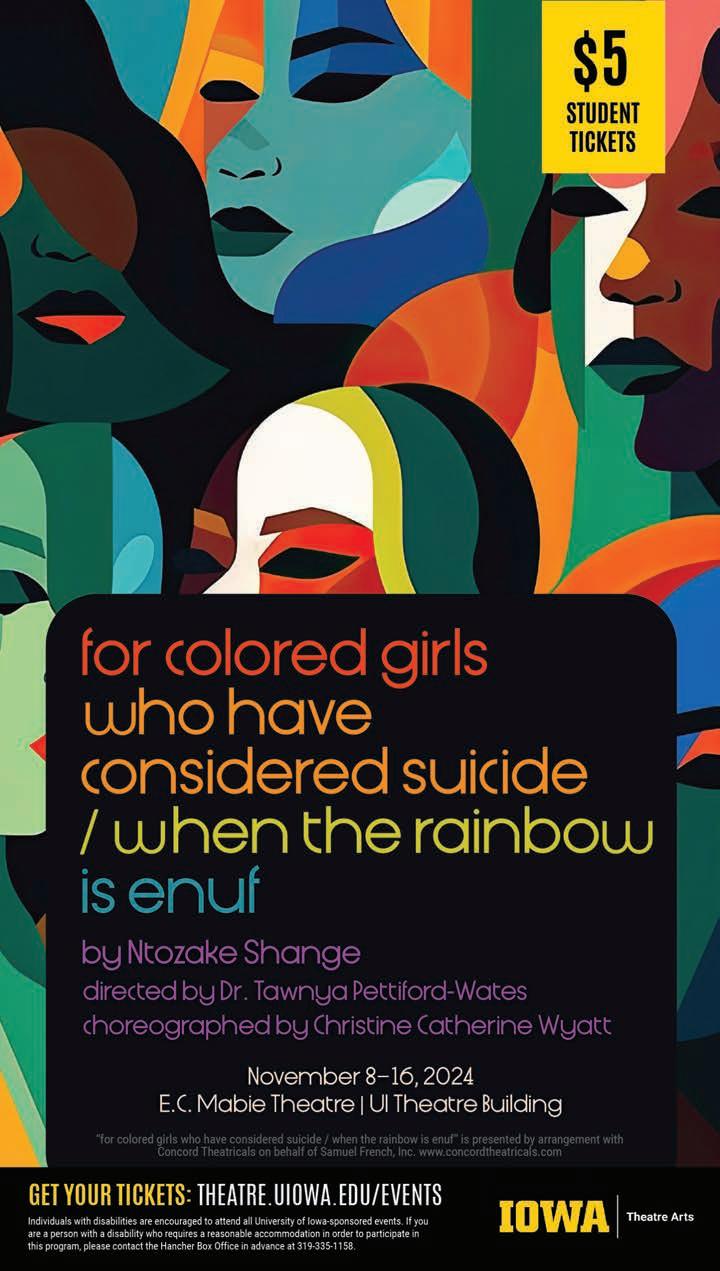
have been released, but each consists of official tapes of interviews with serial killers. The first one released was with Ted Bundy, who was diagnosed as a malignant narcissist, connecting his crimes with his need for power over others.
“I just hate that because they are the most unreliable narrators about themselves in the first place,” McKanna said.
“And it just gives a person like that exactly what they want: more attention and very little to the victims.”
When thinking of true crime, the recent boom in television and podcasts tends to come to mind. But there is a history of true crime in media that can’t be ignored.
“I think it’s important to question what the ‘true’ in true crime is at any given moment,” Zachariah Anderson, a UI assistant professor, said. “Films, whether they are fiction or documentaries, create truth claims through very specific conventions that change over time. So, what we think of as true crime today is not going to be what we think of as true crime in the future.”
Anderson is involved in Iowa’s cinema program and will teach an undergraduate seminar in crime and policing in films next semester.
The class will examine police and crime media through a historical lens, taking note of how attitudes toward crime media have changed
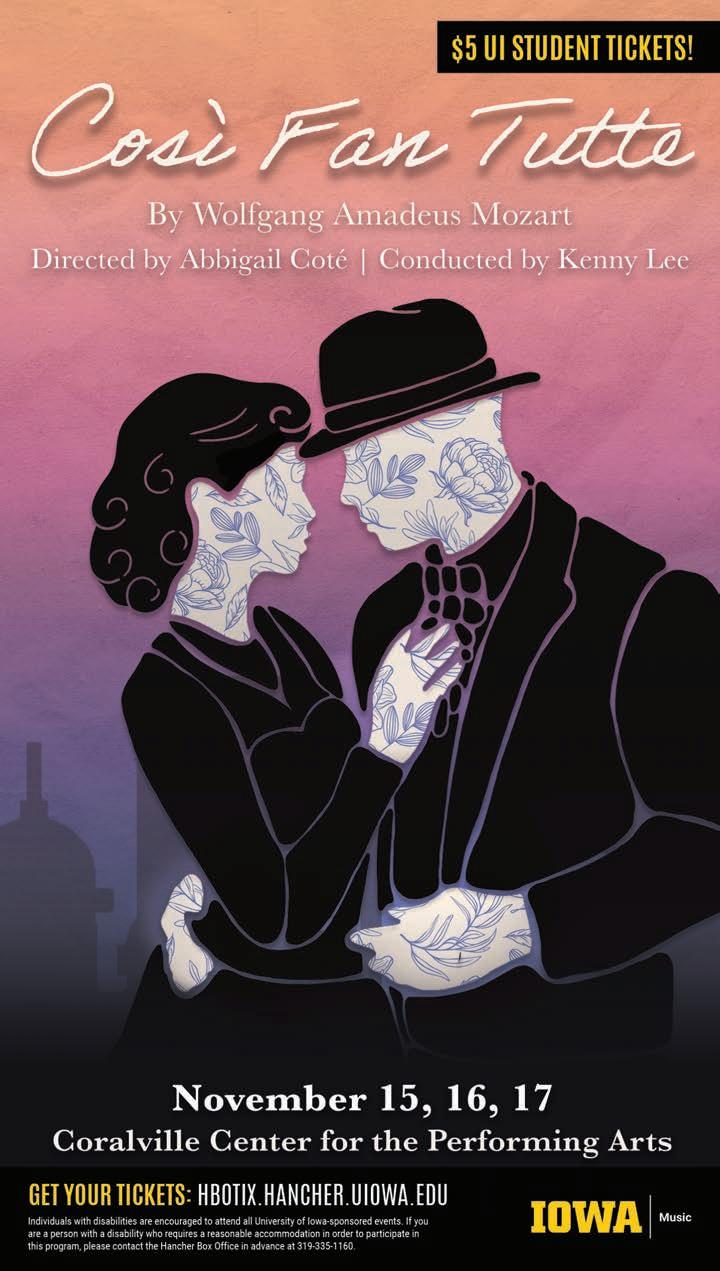

CRIME from 3C over the years. It will also explore how filmmakers are shaping and being shaped by their own social contexts and historical understandings of what crime and policing look like.
“A problematic representation of crime today is obviously radically different than in the context of, say, the Cold War period,” Anderson said.
Anderson said there is something distinct about the streaming era and how true crime is portrayed in present-day shows and podcasts.
UI second-year student Karlee Mathena mainly enjoys listening to true crime podcasts, including the ongoing “Morbid” podcast, which examines different real-life crime cases through the experiences of the people involved.
“When [Morbid] first started, they would go into more detail about serial killers when they talked about each crime,” Mathena said. “But now they focus more on the victims of crimes and will go through the victims’ entire life stories.”
“Morbid” began in 2018, and its change of focus coincides with a larger societal shift that has taken place over the past few years.
“There may have been a shift in viewing victims differently,” Mathena said. “The stories are not about the criminal, and we should focus more on the victims and hear their stories, rather than hearing the criminals’ stories.”
While “Morbid” still releases episodes focused on criminals, the podcast hosts rarely talk about them without at least mentioning the victims and their lives.
Second-year UI student Hannah Rechlicz grew up watching one such show, “Dateline,” alongside her mom.
“My mom would put ‘Dateline’ on Friday nights, and after dinner I would just sit down there and watch it with her,” Rechlicz said.
Rechlicz’s experience of growing up watching true crime television is not unique. In fact, several college-aged students also got into watching the genre through a parent — specifically their mothers.
This continues a trend that women are more likely than men to consume true crime content. Overall viewership of these shows is at an all-time high, with a new YouGov poll reporting that 57 percent of Americans say they watch true crime content.
“I decided one day that I was going to sit down with my mom, and we were just going to watch a show together — ‘The First 48,’” Madison Meerdo said. “It may be morbid, but I enjoy this content. It’s very informative and true crime has been so popular, especially over the last few years.”
Meerdo studies forensic psychology at Slippery Rock University and finds herself drawn to true crime content naturally.
Throughout her time in school, she has gained information about differ ent crimes from both her studies and the true crime content she consumes. As long as crime mediums take the time to be both accurate and informa tive, she finds herself naturally drawn to true crime content.
“When I search for shows and podcasts, I want to learn the psychology and forensics behind cases,” Meerdo said. “I want to learn, ‘Why did they do that? How did this happen? Or how did that happen
Iowa City Public Library set up an ofrenda, or altar, to commemorate loved ones in the Iowa City community and educate people on Día de los Muertos.
For some people, the idea of death can be scary or saddening. However, for some Latin American people, death is something to be celebrated on a special day called Día de los Muertos, or The Day of the Dead.
A holiday dating back to Mesoamerica, Día de los Muertos is a way to remember deceased loved ones, pets, and friends. It is typically celebrated from Nov. 1 to 2, but some families celebrate it earlier.
One of the most notable features of Día de los Muertos is the ofrenda, or altar. It can be a small table to remember one person or a multi-tiered remembrance of many.
The altar is typically decorated with cempasúchil flowers — a marigold with a musky smell — candles, incense, calacas or sugar skulls, papel picado, a paper banner, and the favorite foods and comforts of the loved ones.
In addition to preparing their loved one’s favorite foods, families will also make pan de muerto, or “the bread of the dead.”
instead of this outcome?’” she said.
Most of her favorite TV shows have a lot of suspense and vivid scenes where the actors portray what happened.
“Even if you don’t have a very good imagination or you can’t really put actions to a scene in your head, if they [the showrunners] show it to you then you can see what happens,” Meerdo said. “Showing real parts or reenacted parts of the crime is what really makes a show so much more impactful.”
While creators can’t use visual elements to tell stories

It is a sweet or savory round loaf, meant to resemble the circle of life and death. The bread can be decorated with knobs of dough meant to resemble a skull and bones, and it’s dusted with sugar or sesame seeds.
The incense, candles, and flowers serve to guide the spirits to the altar. Many families will even make a trail of flowers leading to the altar.
Once the spirits find the altar, they can enjoy the food that has been prepared for them. Their families will then go to the cemetery, eat the food, reminisce, and pray over their deceased loved ones.
“As soon as you walk through the cemetery gates, it’s like you’re with your family again,” Mya Juarez, a teen at the library, said.
The Iowa City Public Library set up its own ofrenda as a way for people to learn more about Día de los Muertos. The display was covered with photos of loved ones, pets, and friends in the community and covered with over a hundred tissue paper flowers. Made by students at South East Junior High School, it is a touching sight. The minds behind this ofrenda were Public
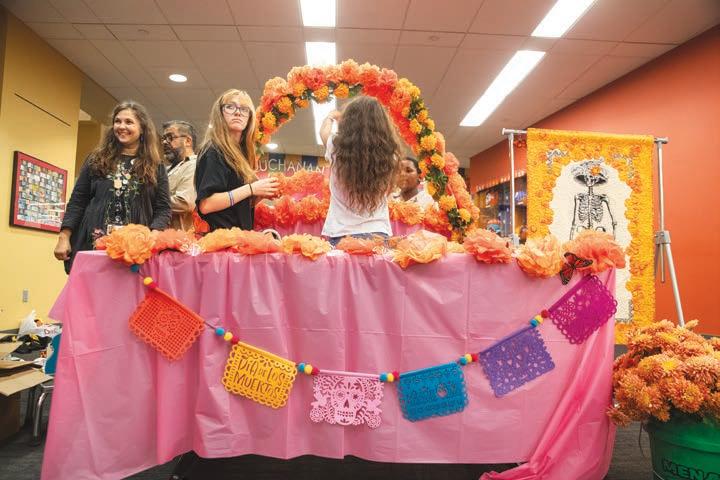
“We have a sizable Latinx population in the community,” Fernandez said. “And a great library holds up a merit to its community.”
She teamed up with Galvez to gain his insight into the traditions of the holiday. Galvez, who was born and raised in Mexico, was more than happy to help.
“To see my culture [represented] here,” Galvez said. “I feel very welcomed.”
Even though the holiday remembers deceased loved ones, it is not intended to be a sad day. Rather, it is a celebration of life.
“It is [a way] to commemorate how amazing they were when they were physically with us,” Galvez said. “This is a beautiful tradition, and cultural expressions are the best way to connect people.”
In addition to the altar, Galvez and Fernandez set up information boards where people can learn more about the holiday. People are encouraged to write their own poems and put up their own photos on the altar. In fact, several passersby who recognized the ofrenda pointed it out to their little ones.
“This is the very first ofrenda,” Fernandez said. “But it’s not going to be the last one.”
